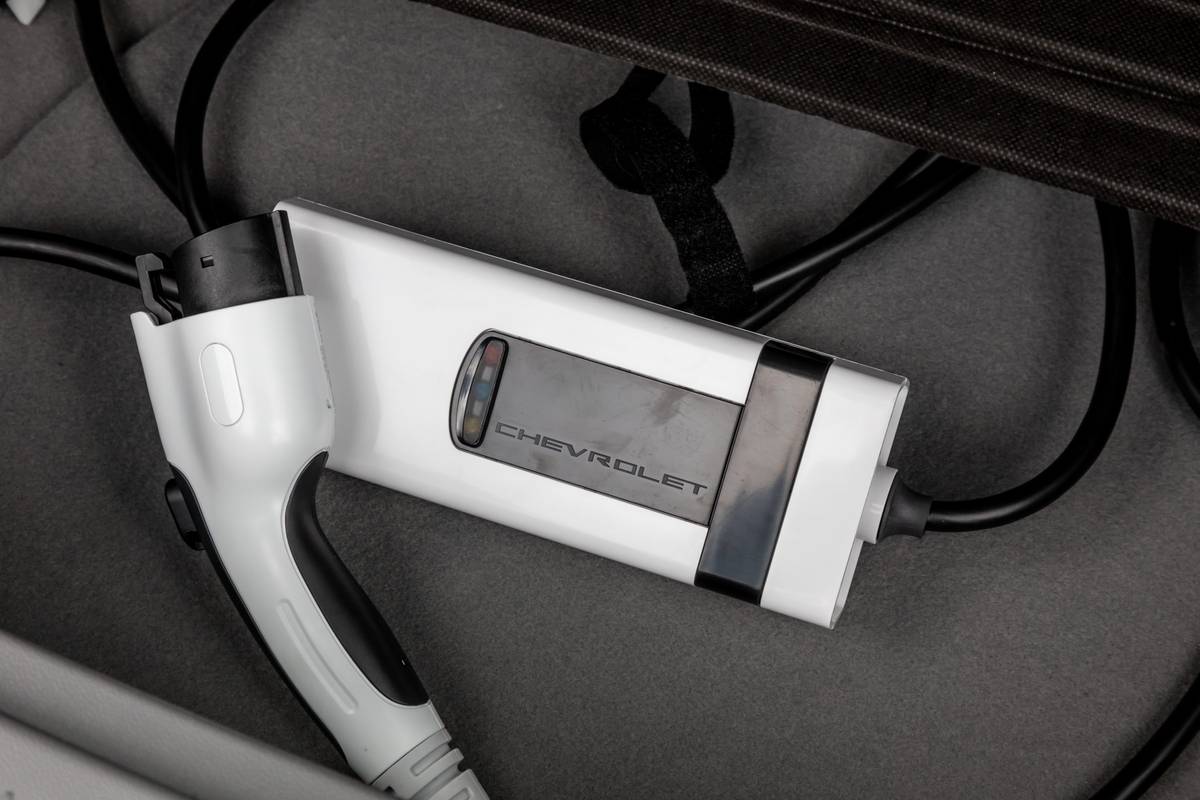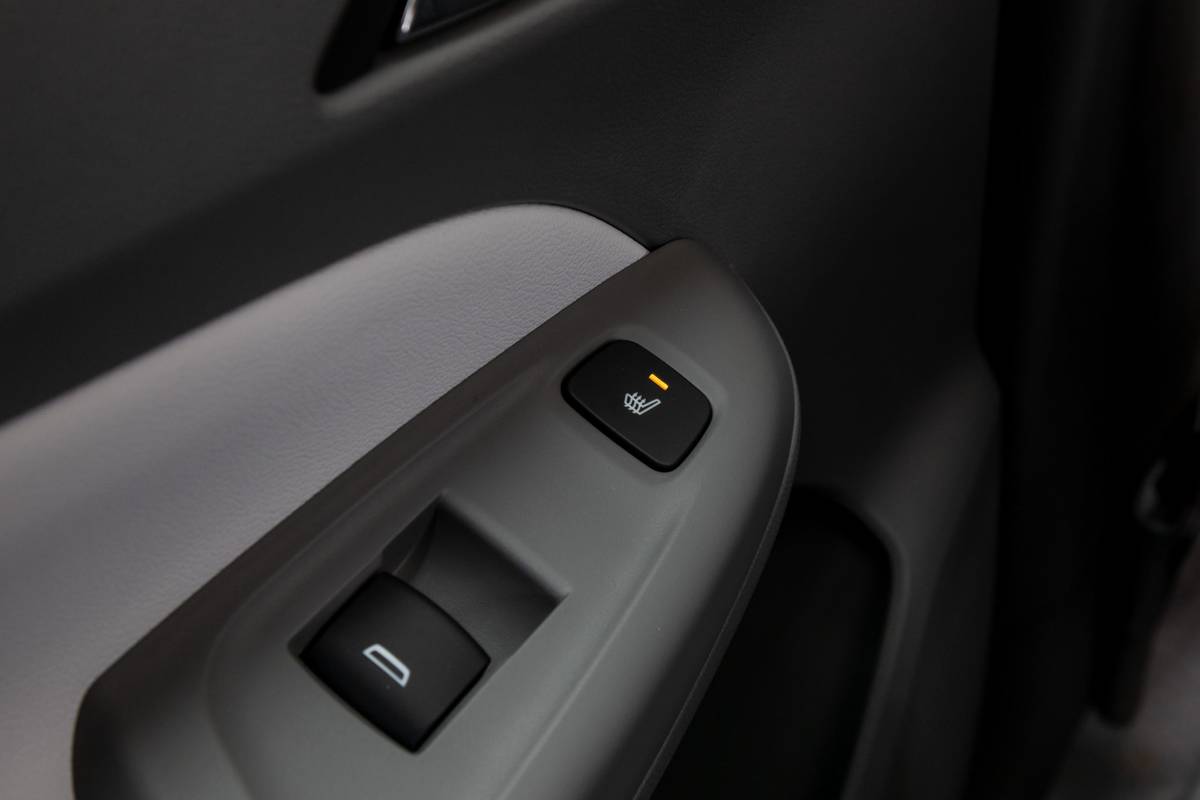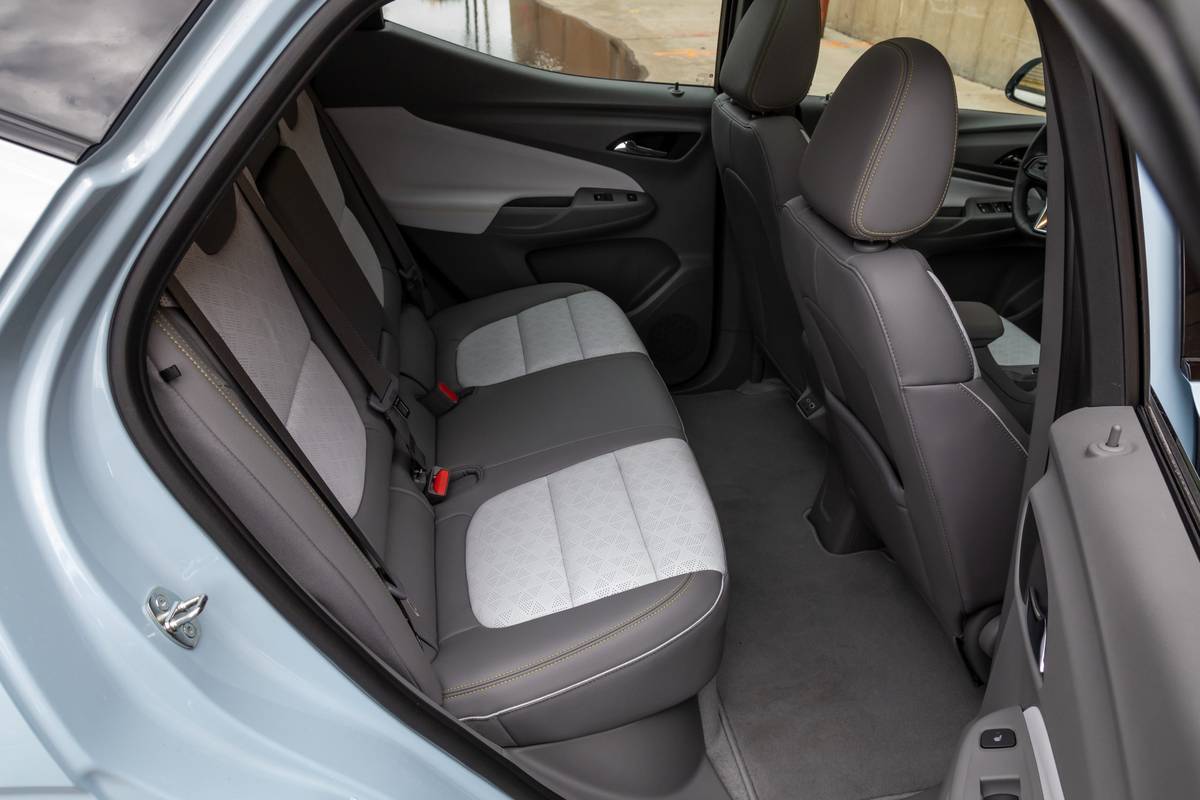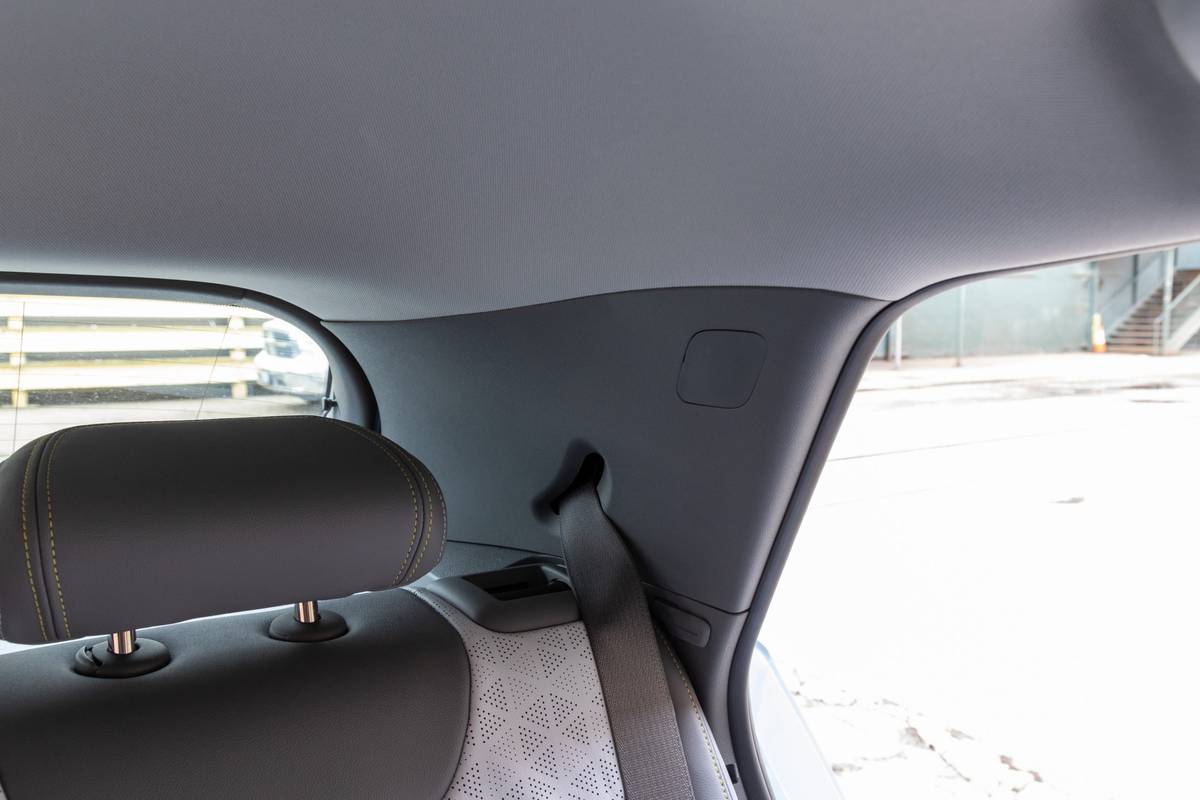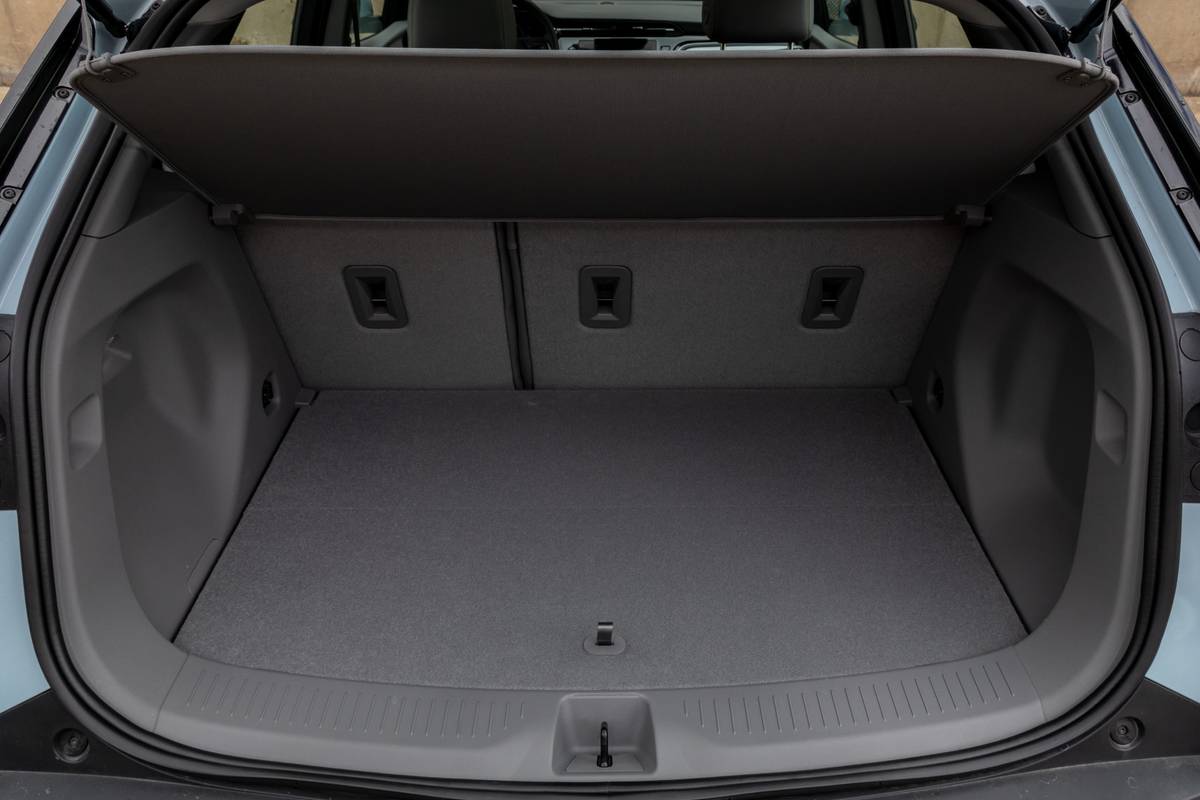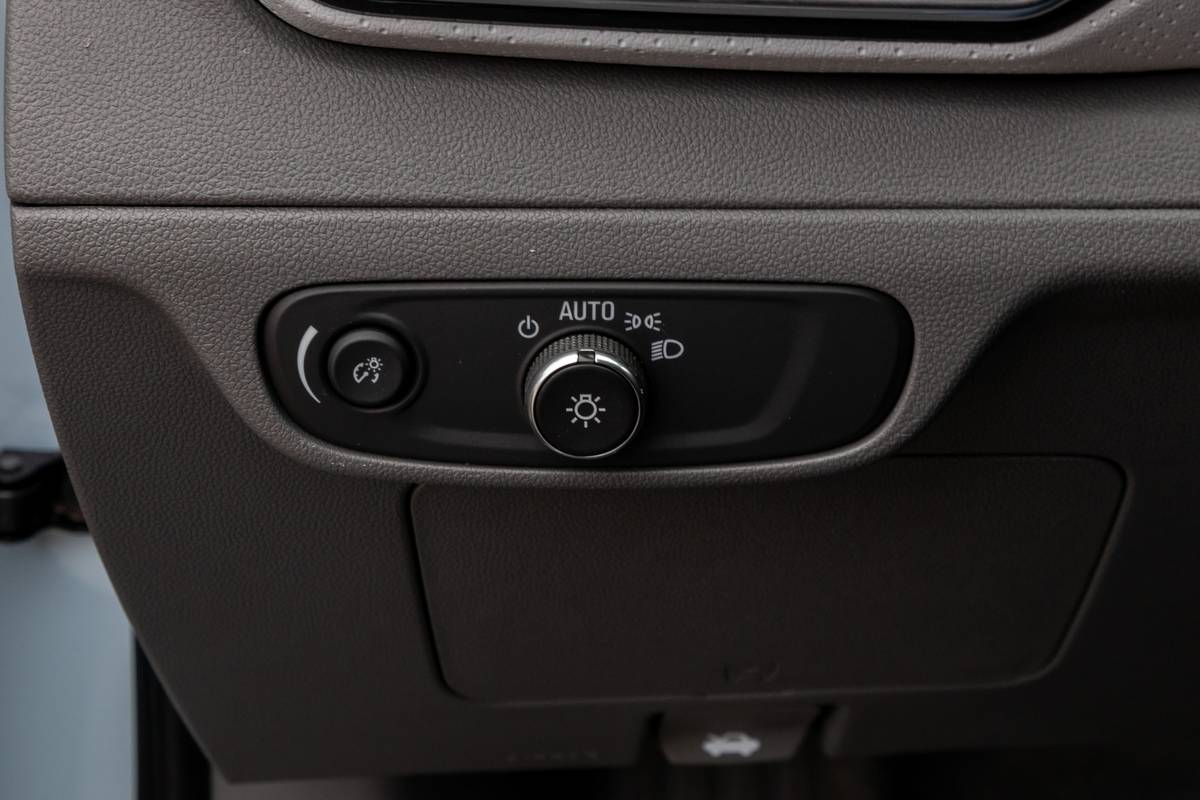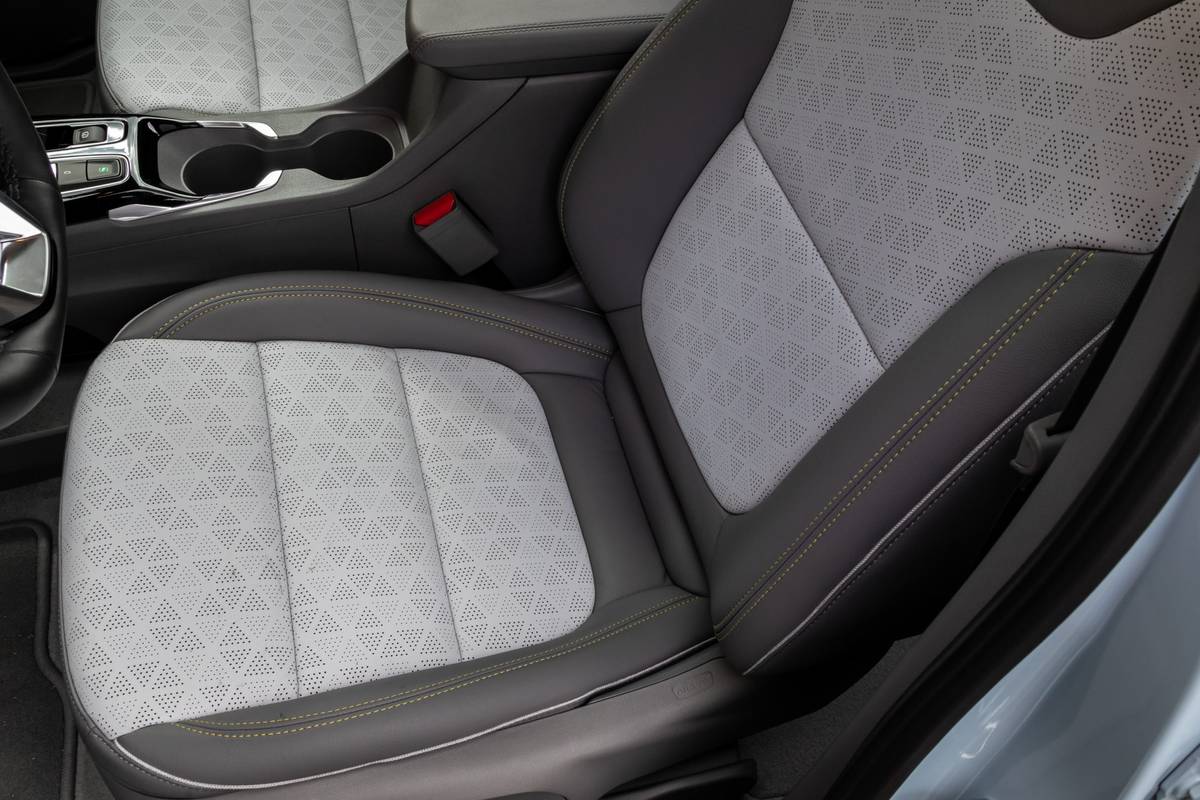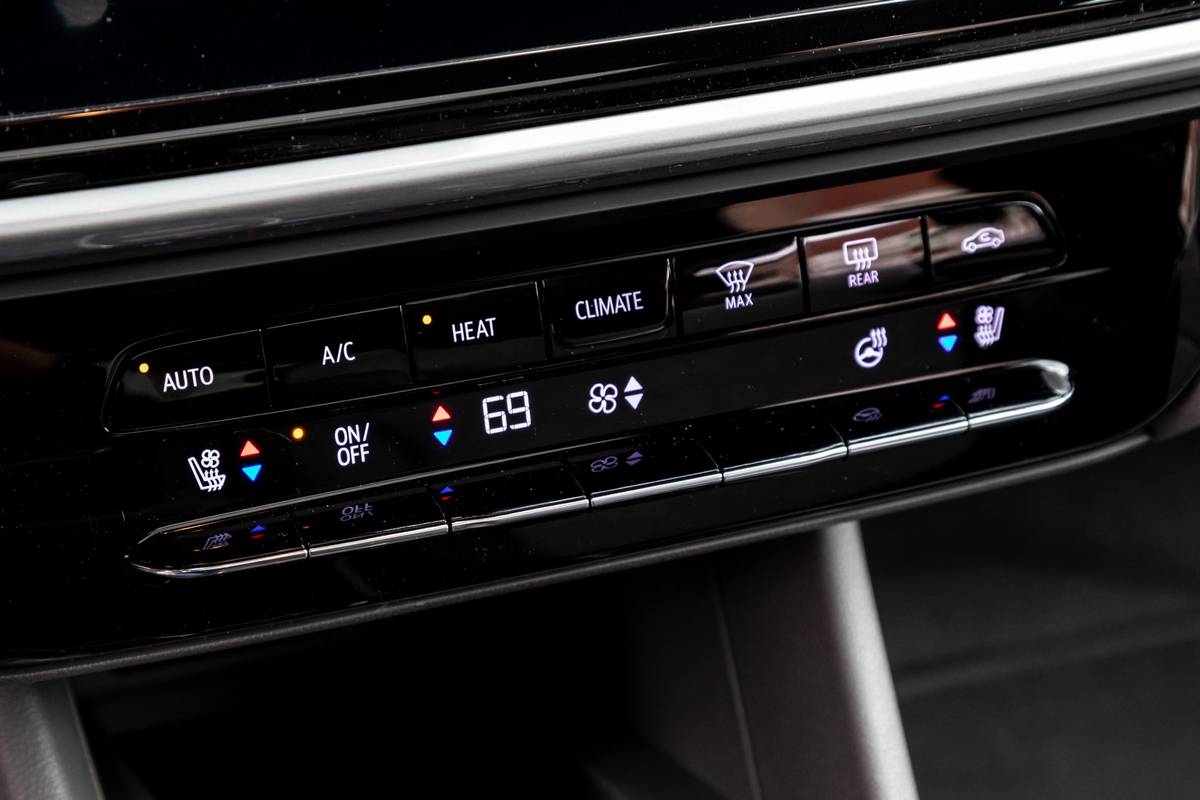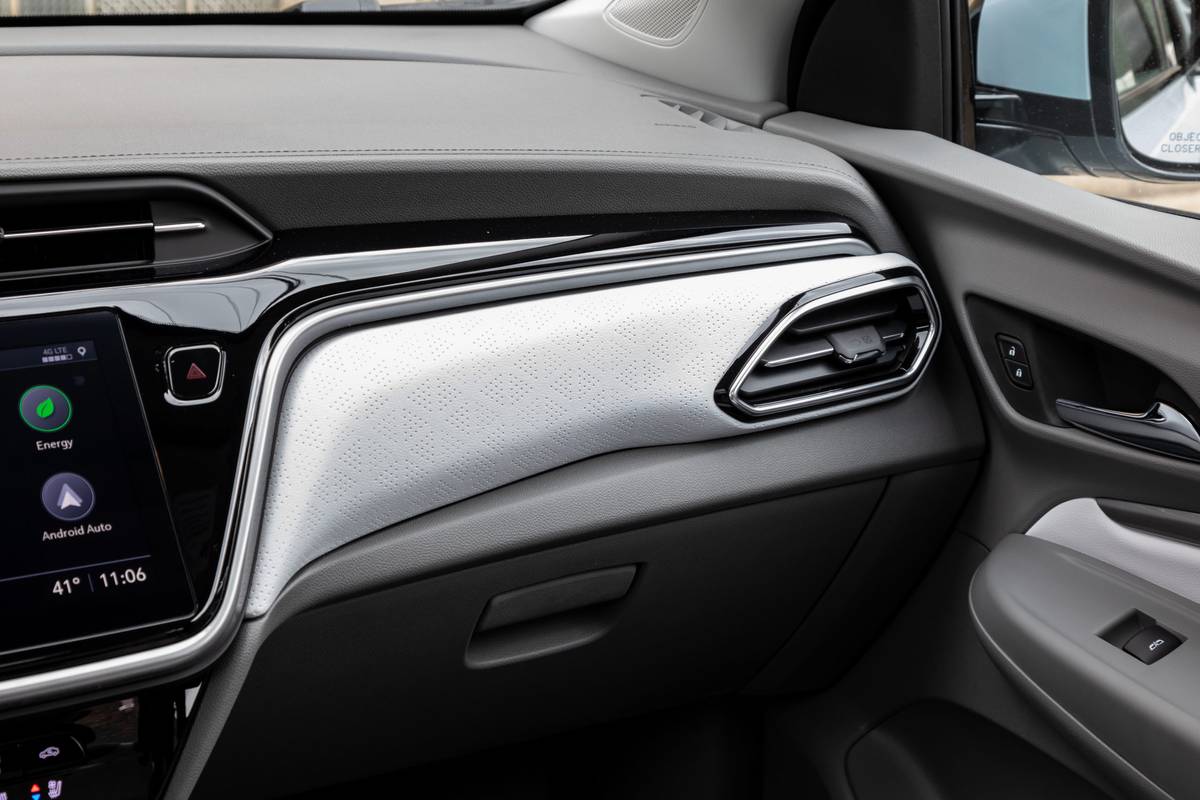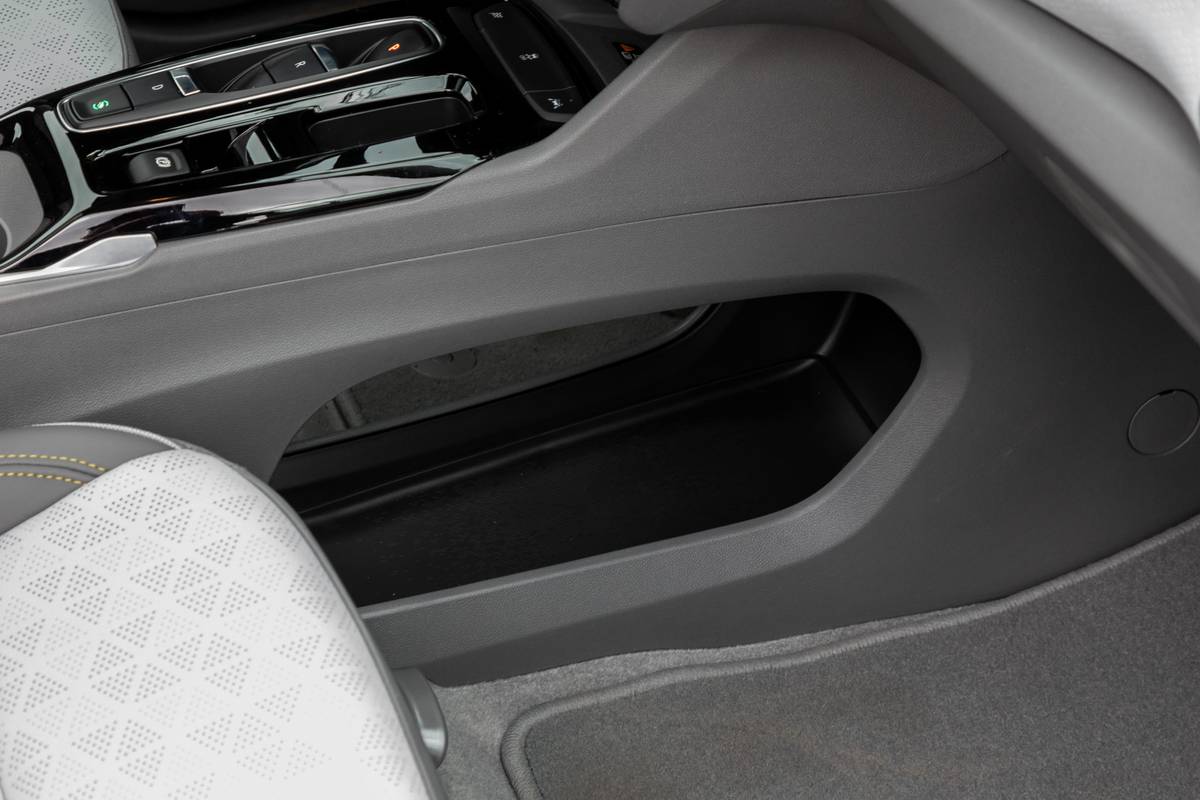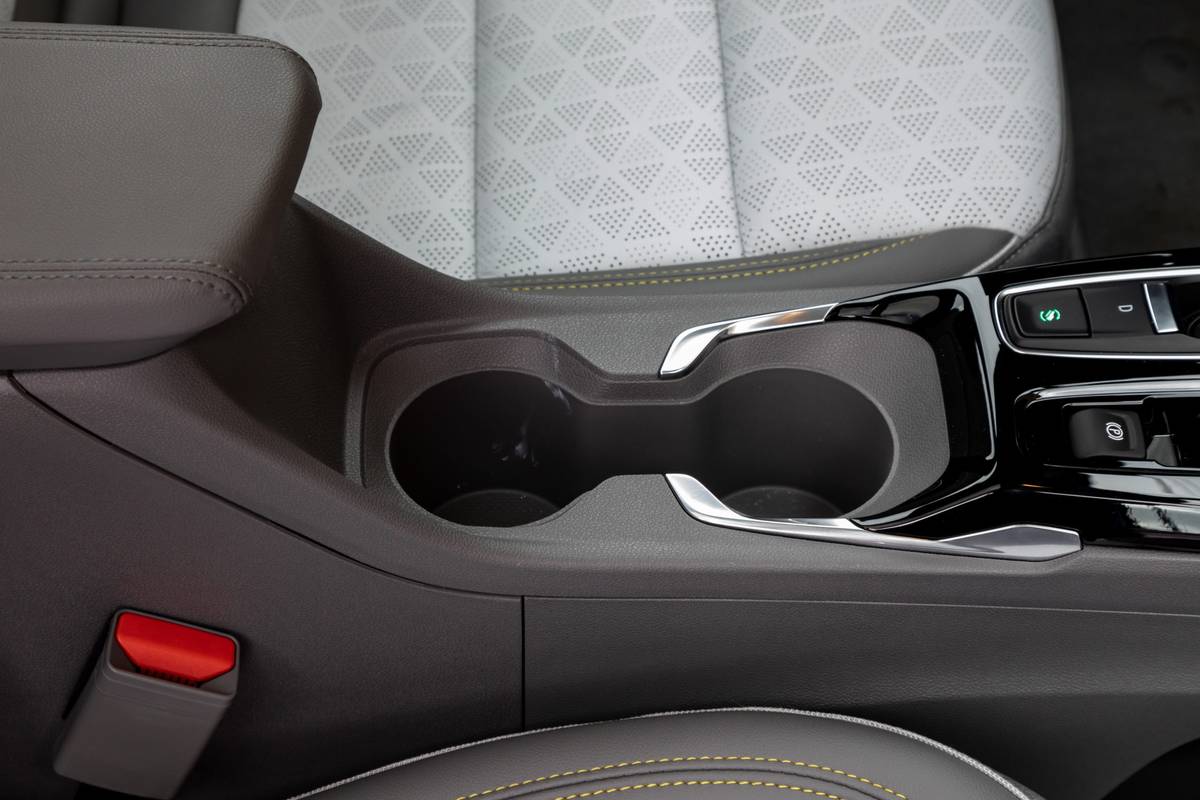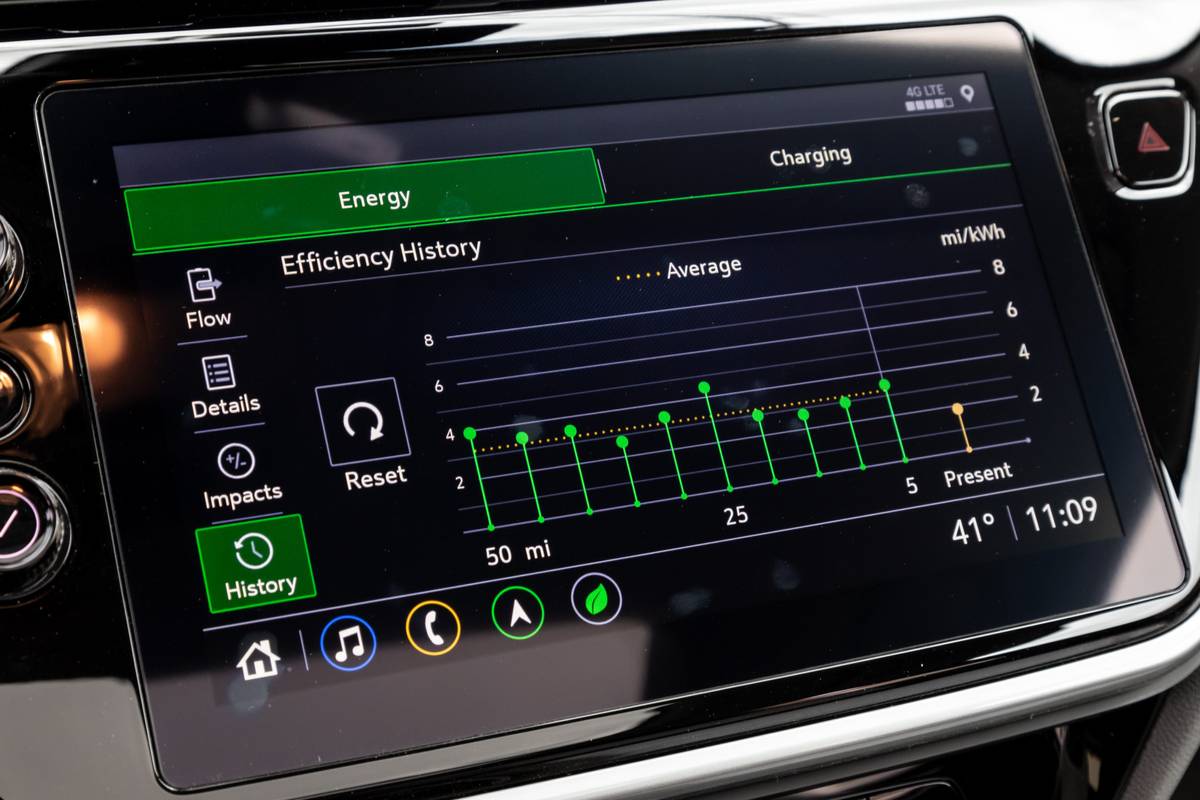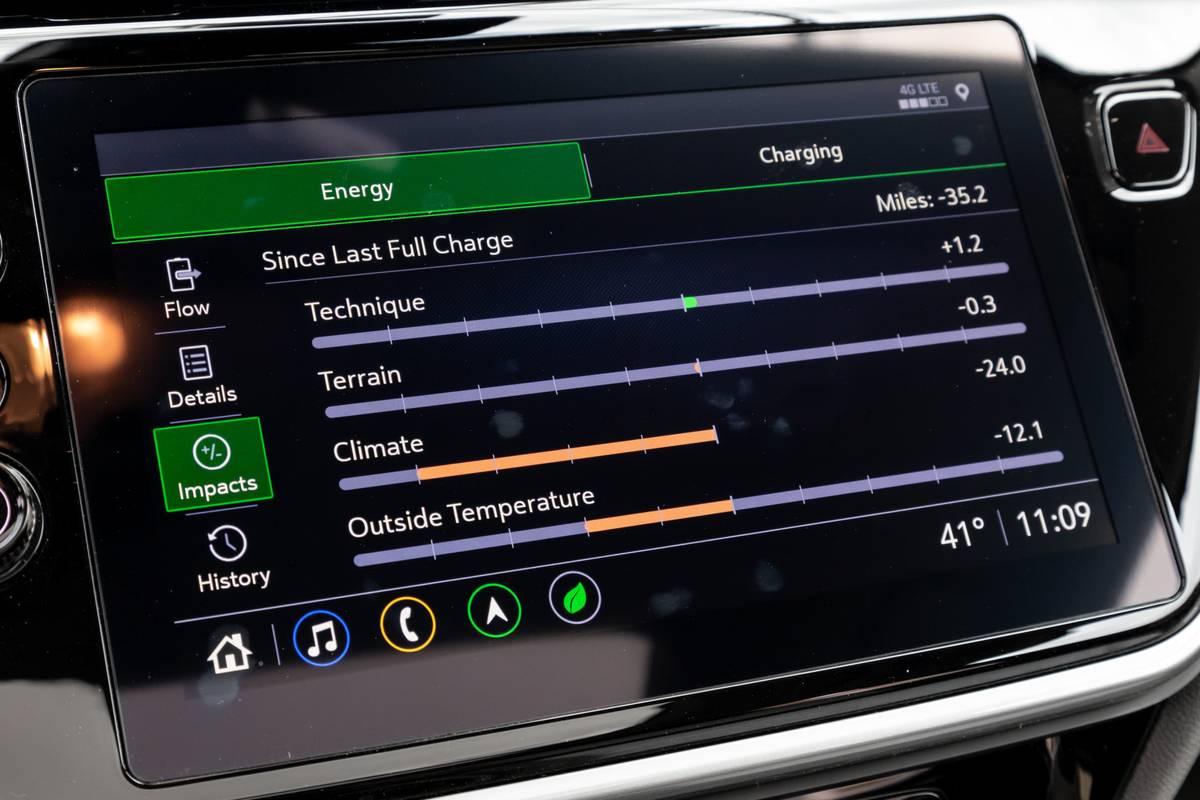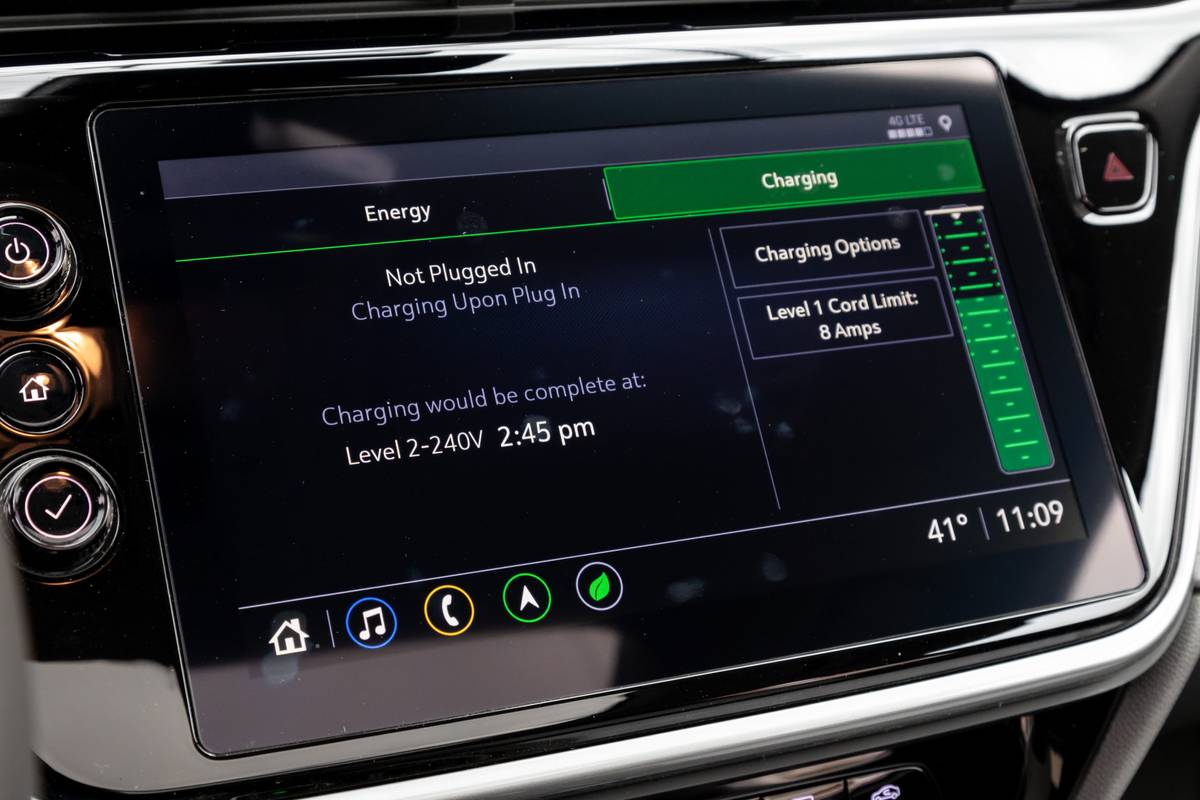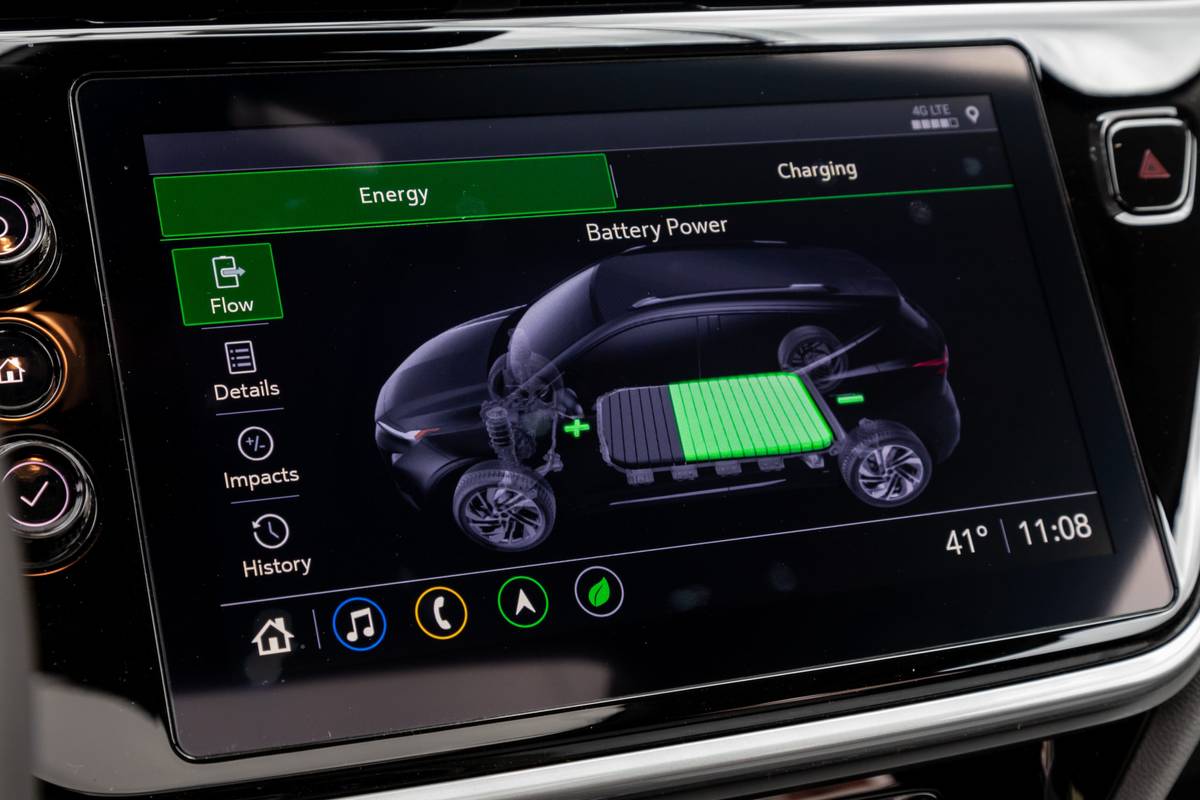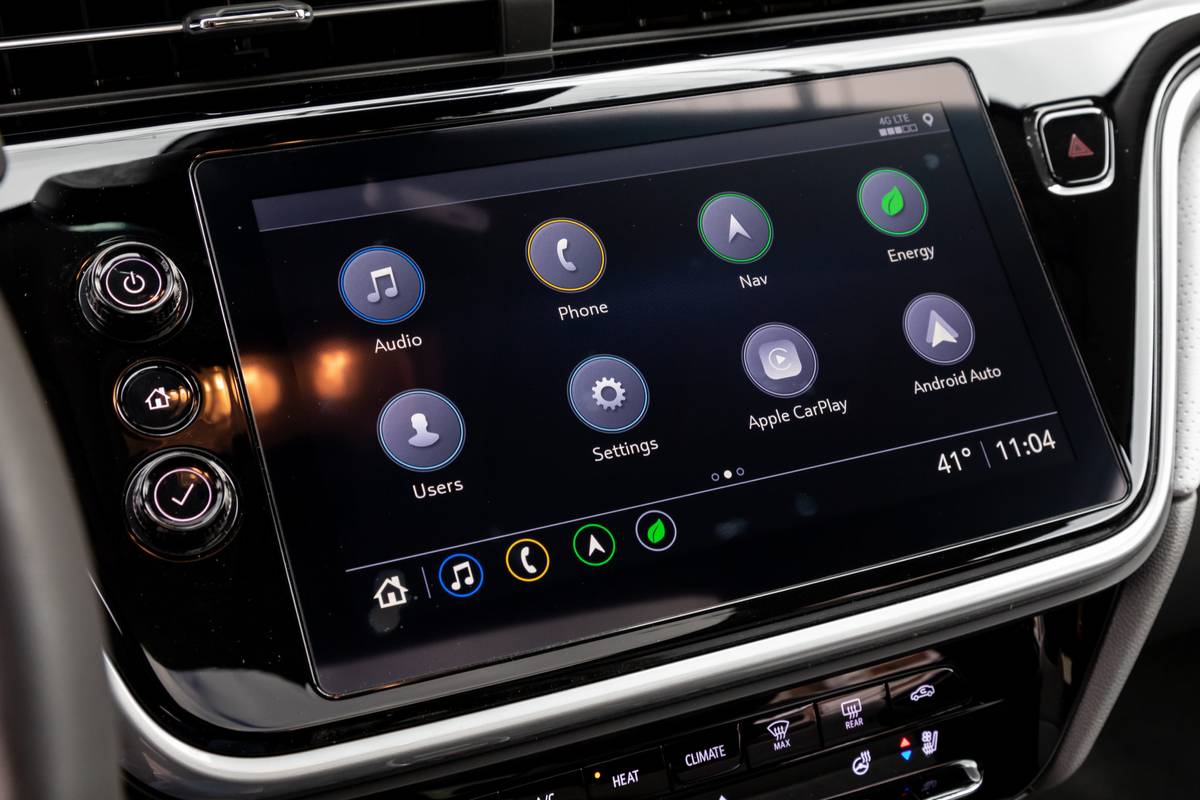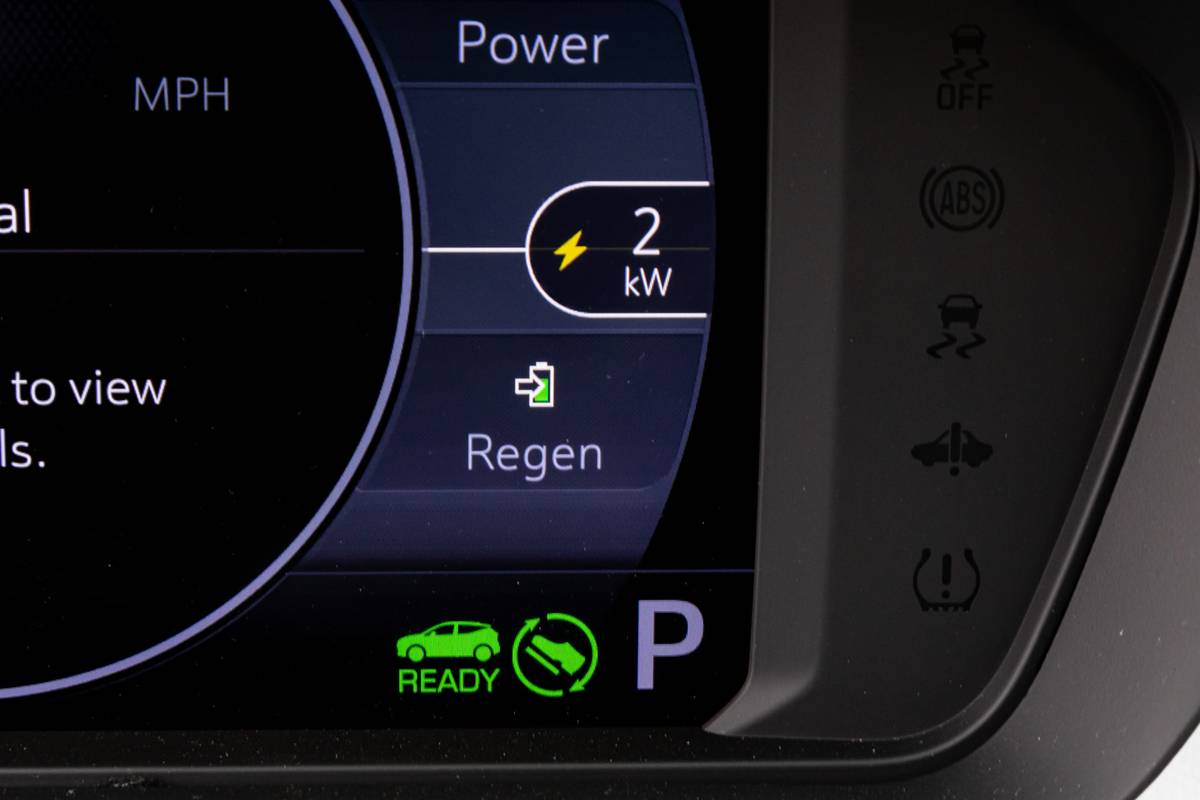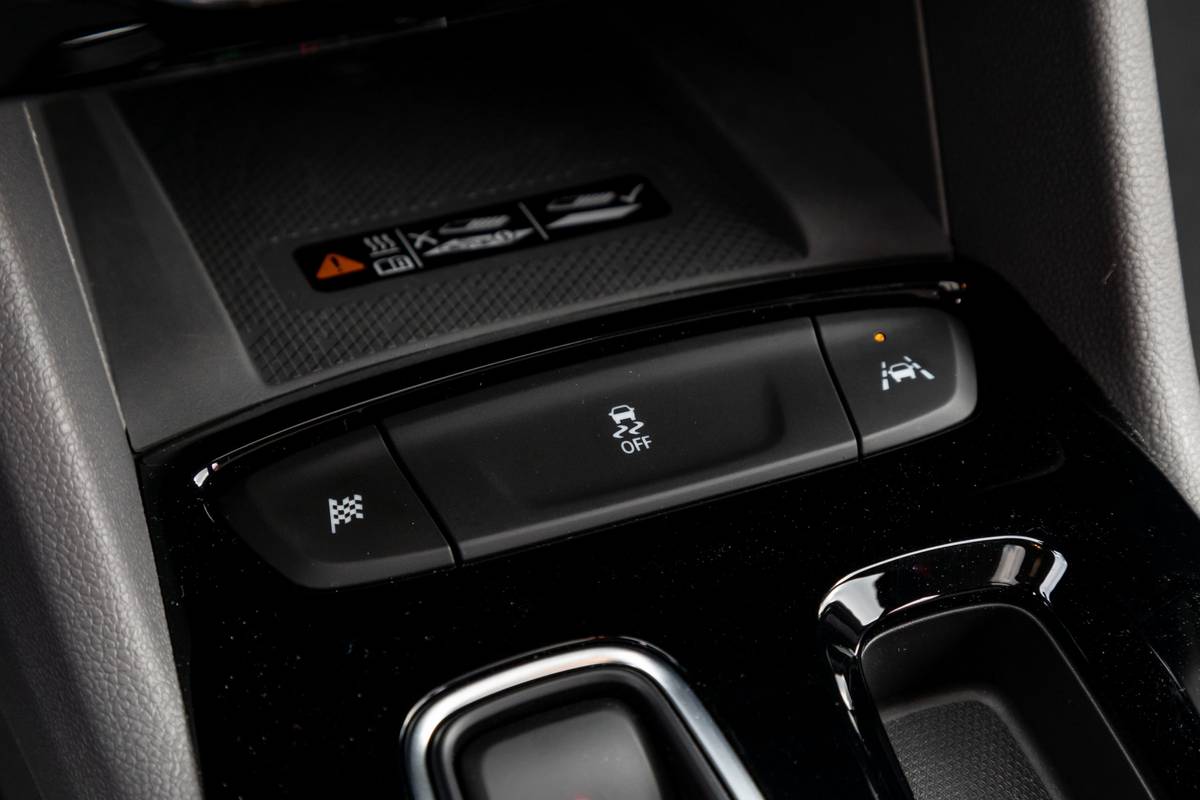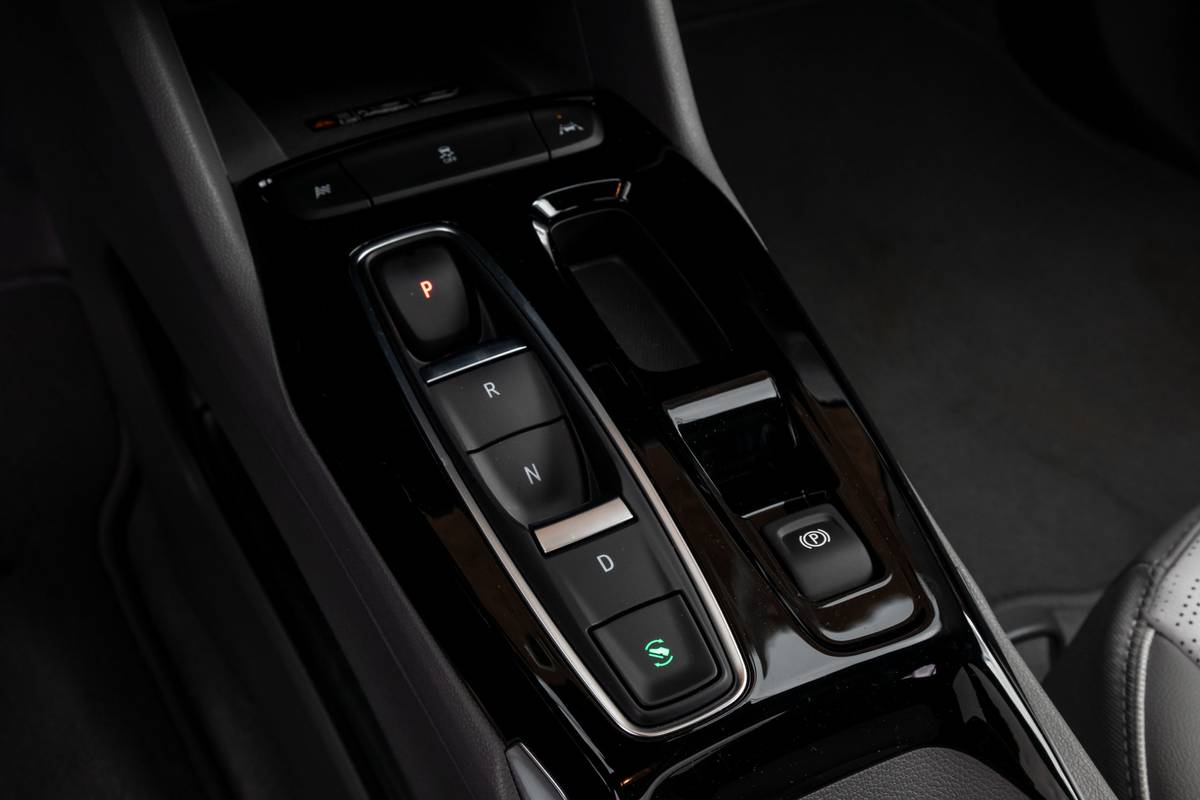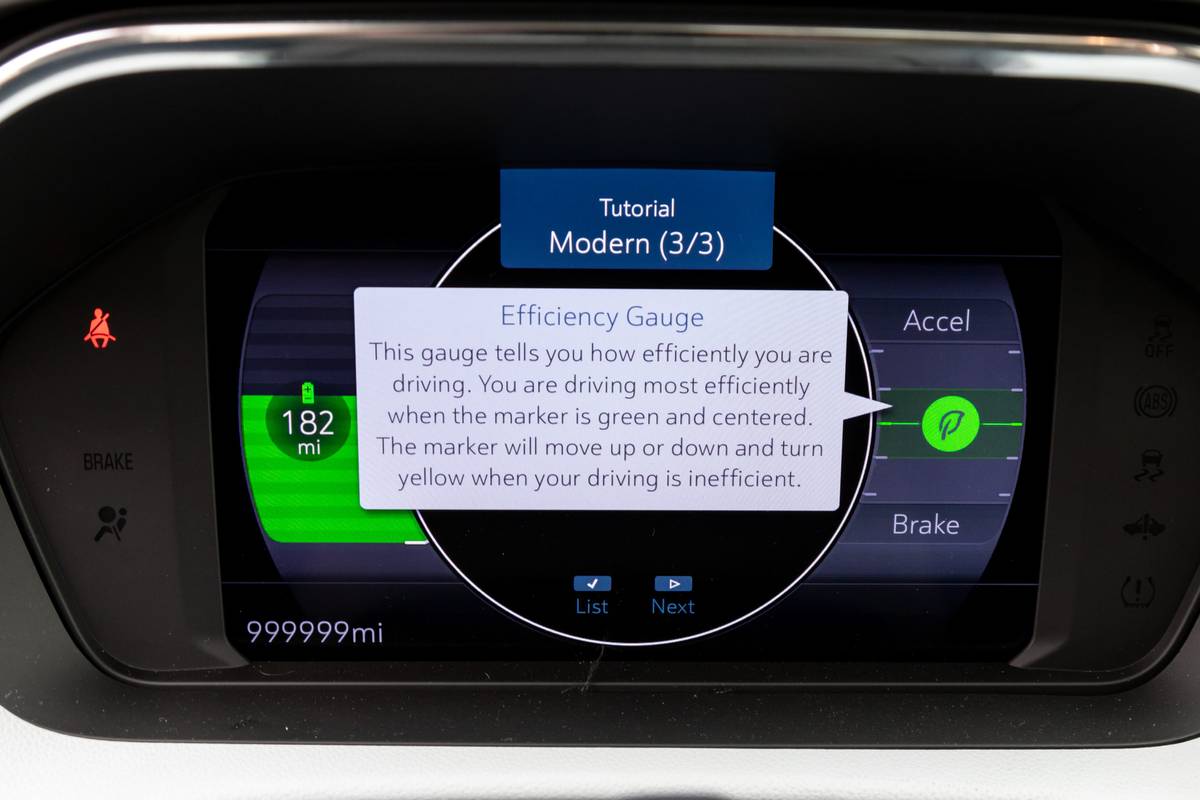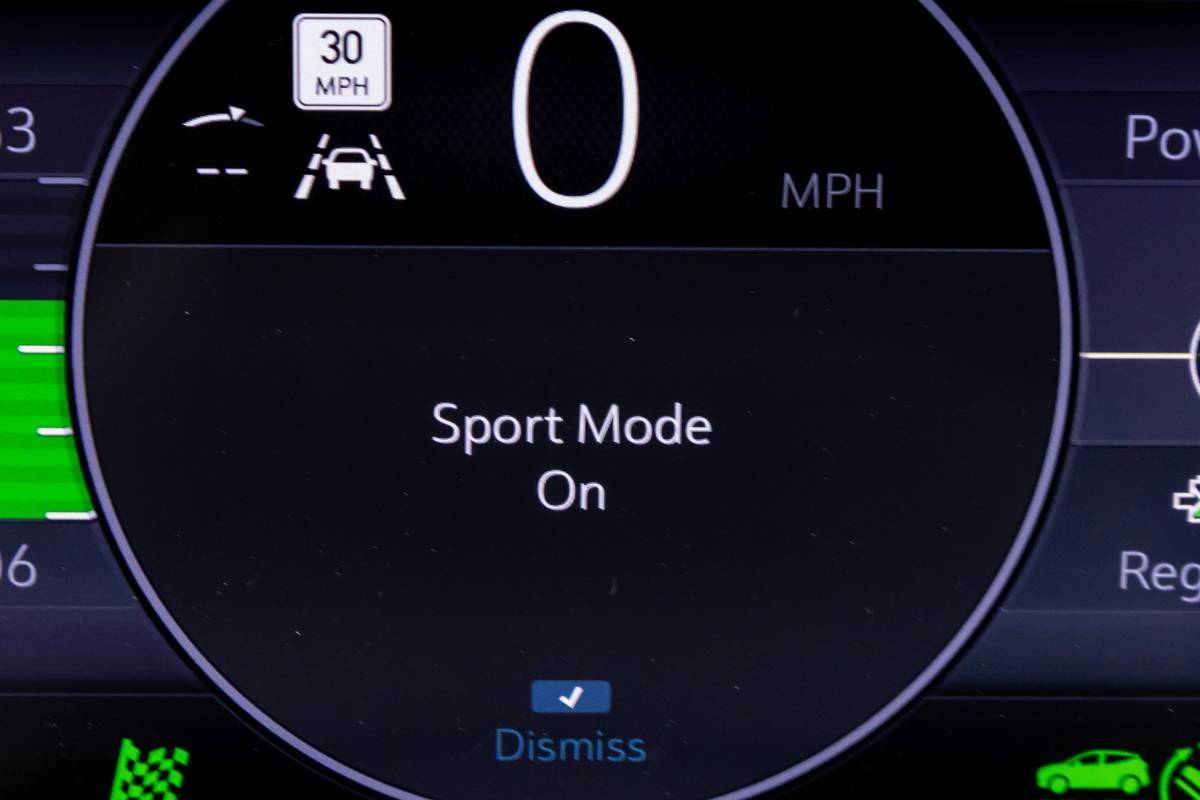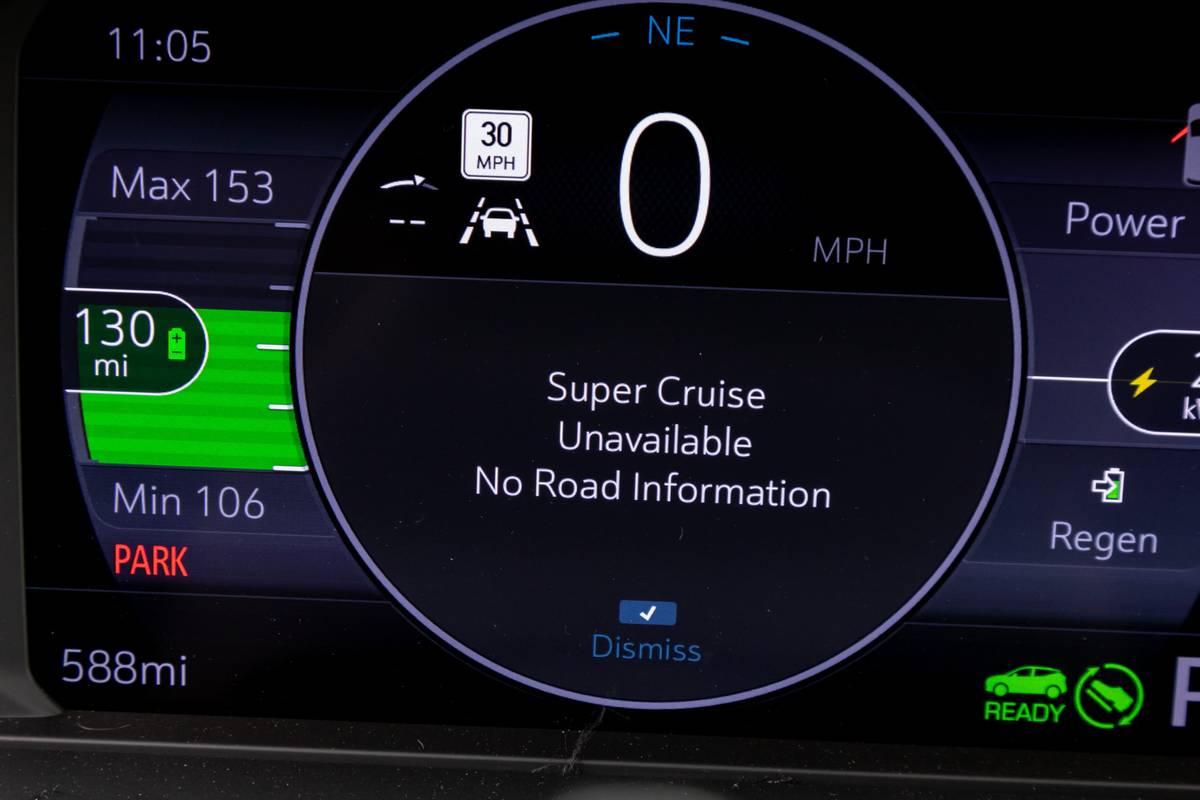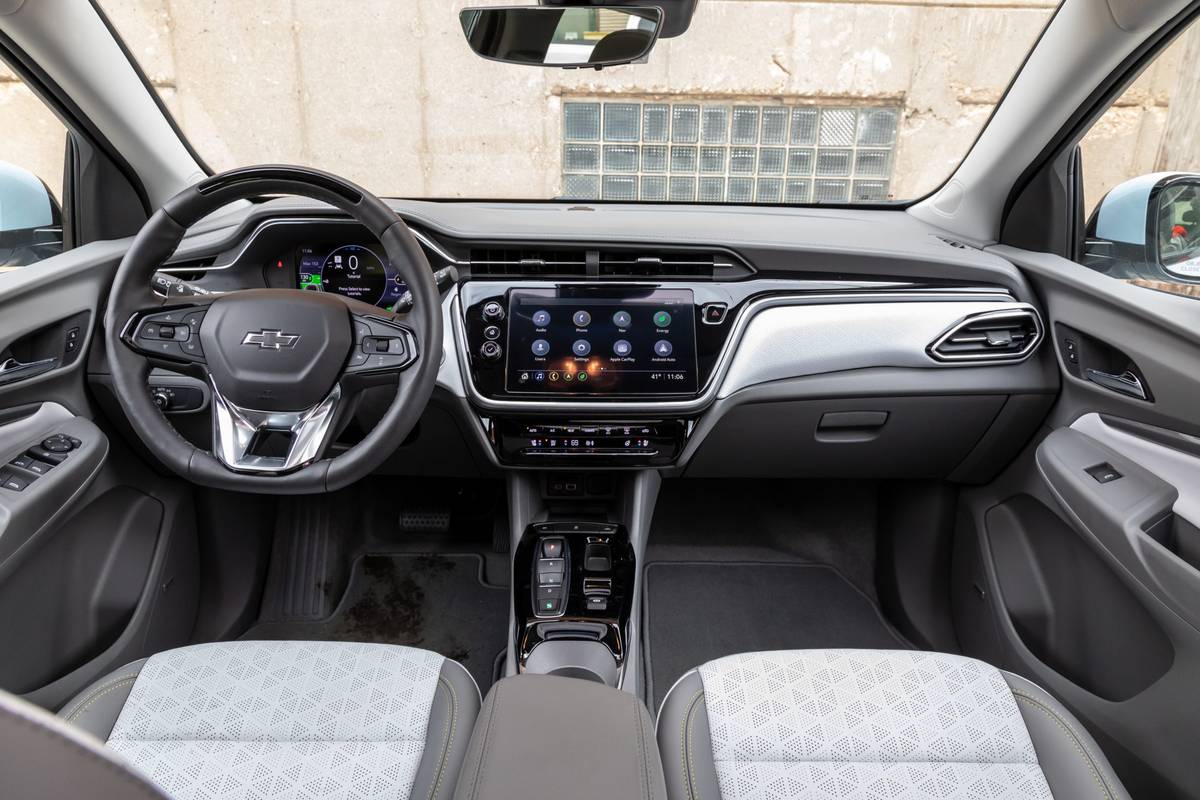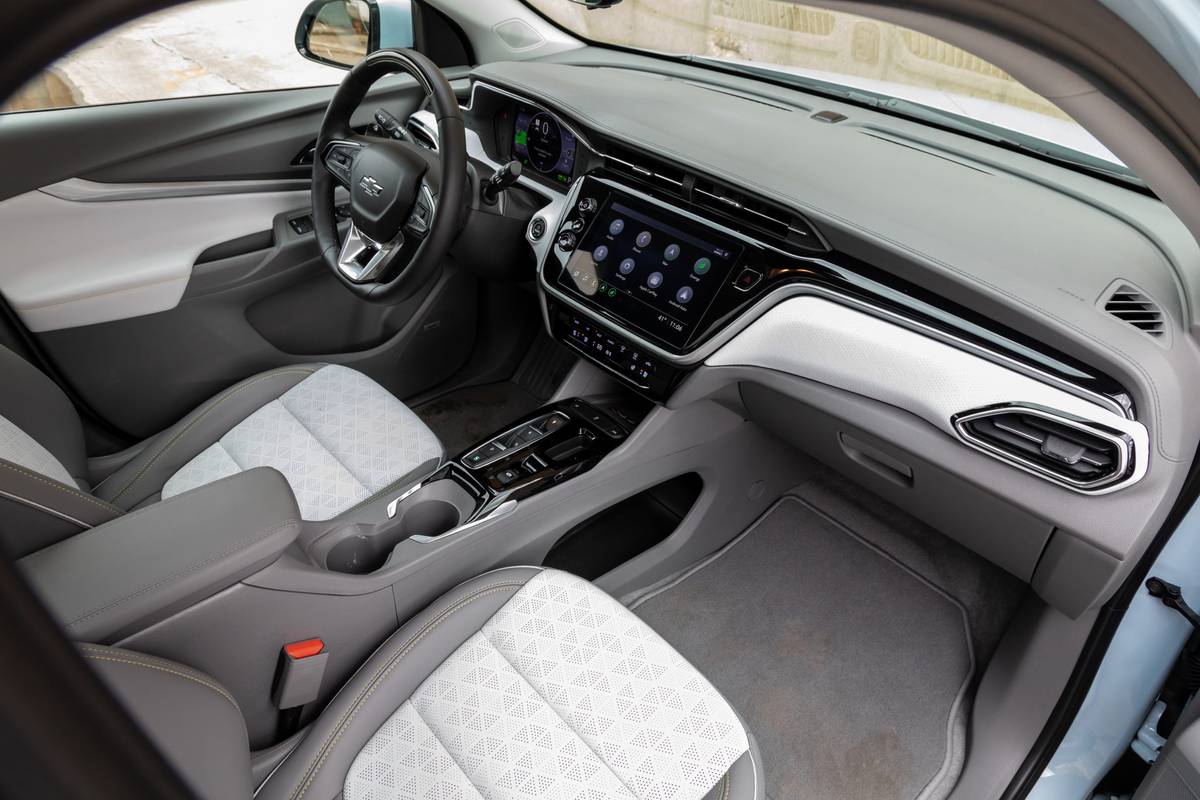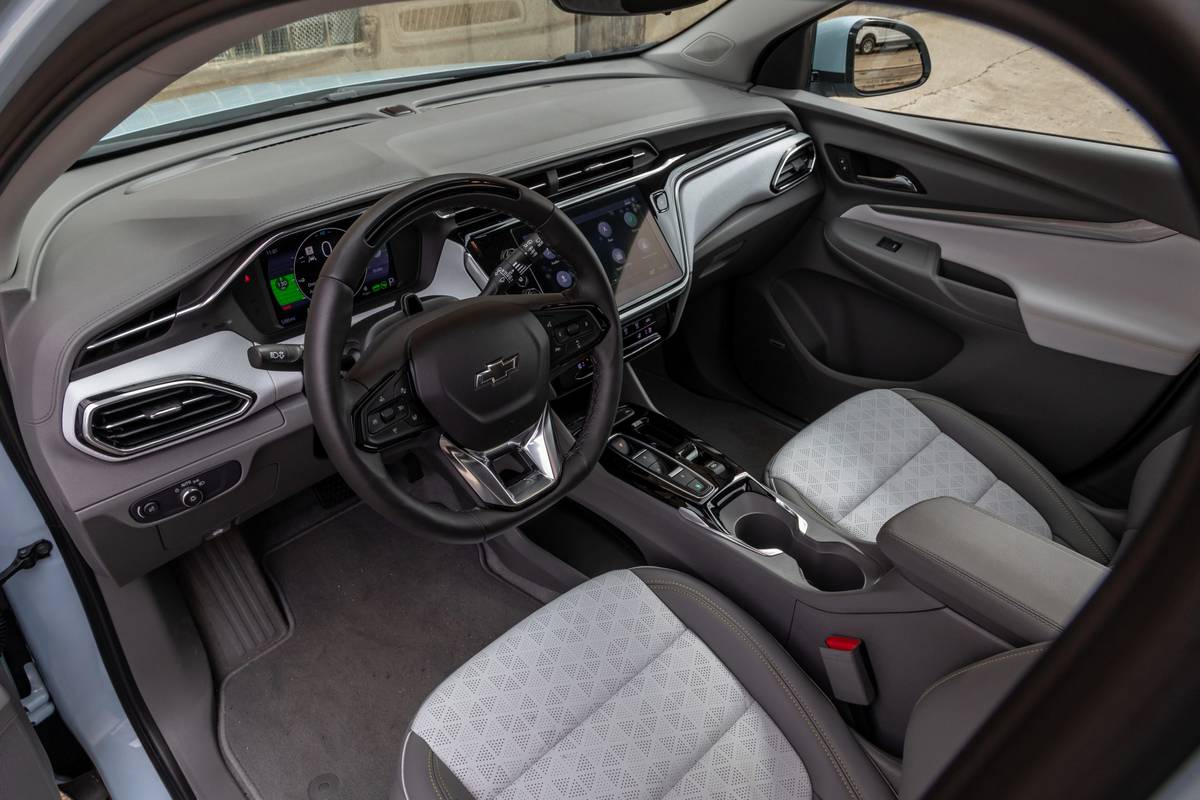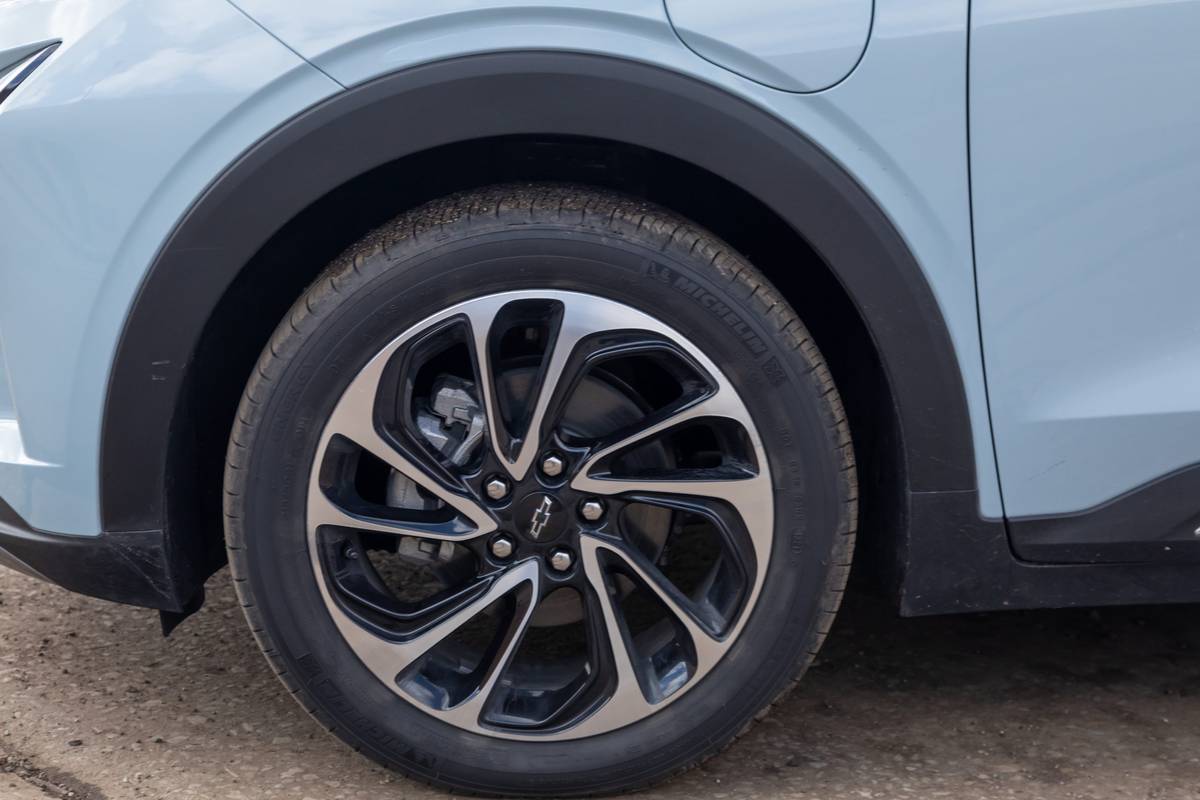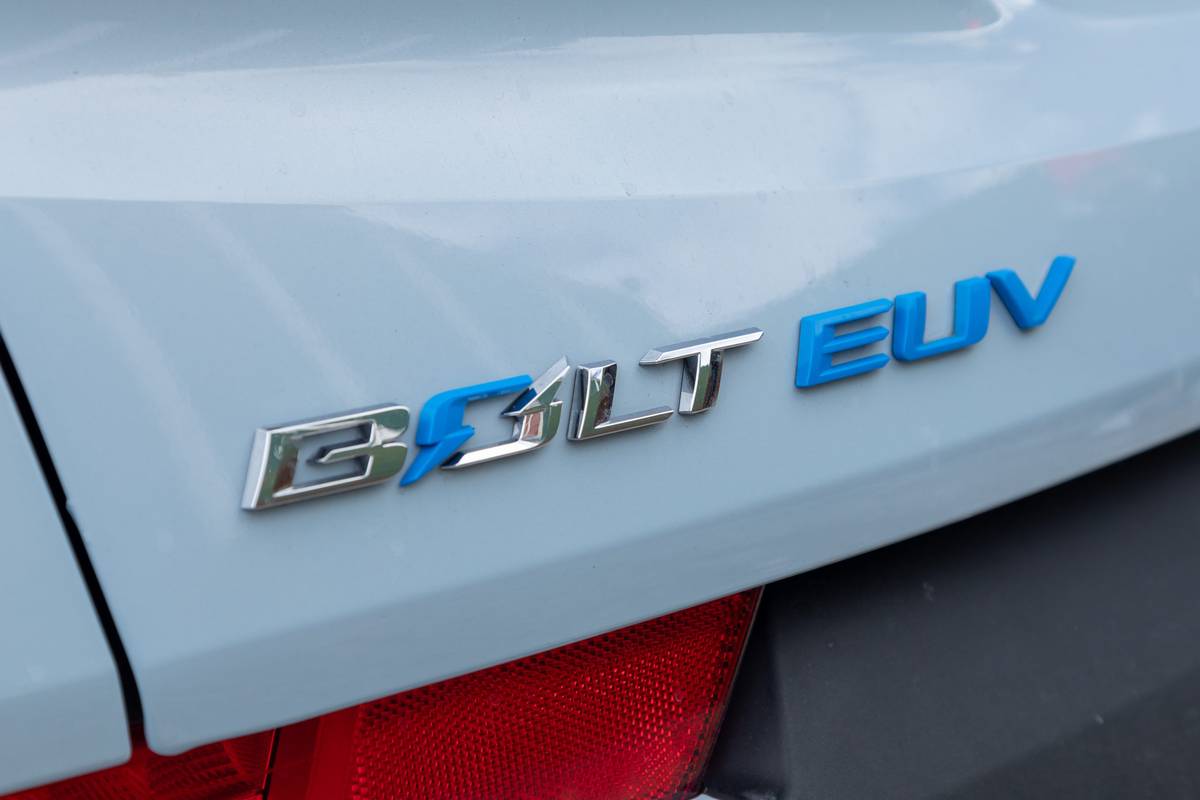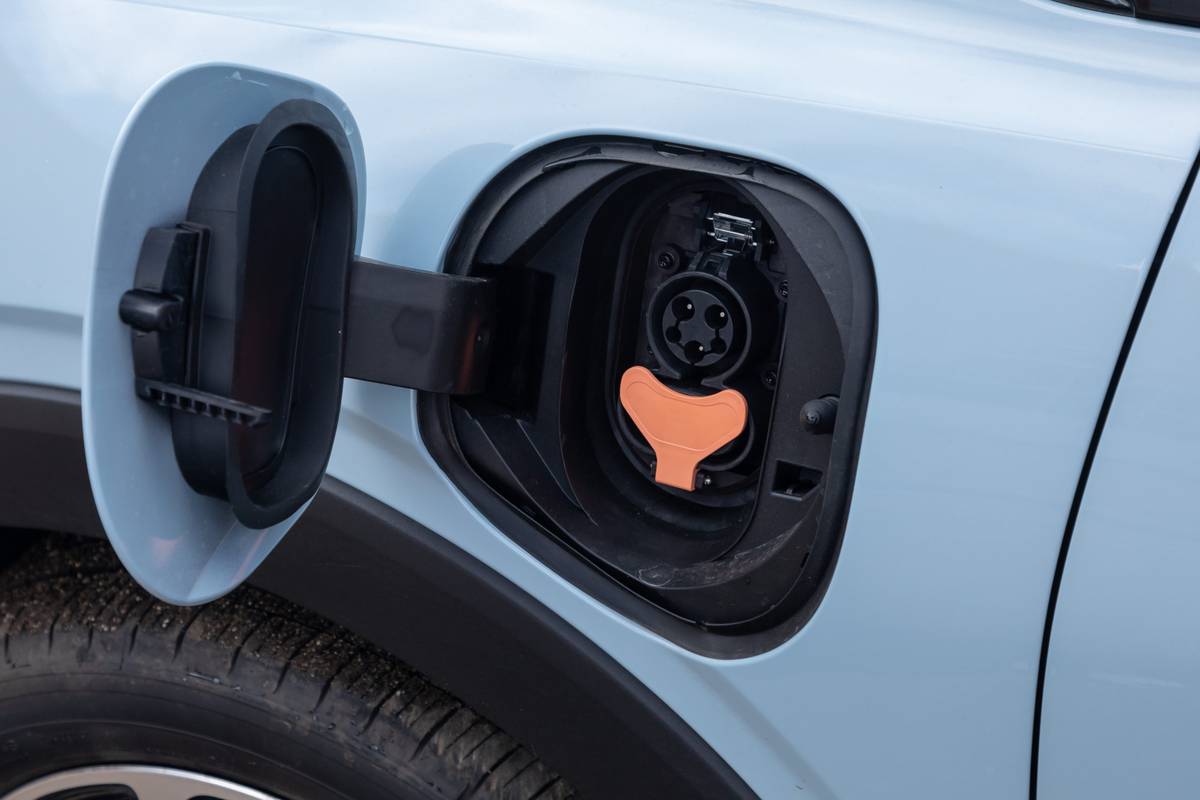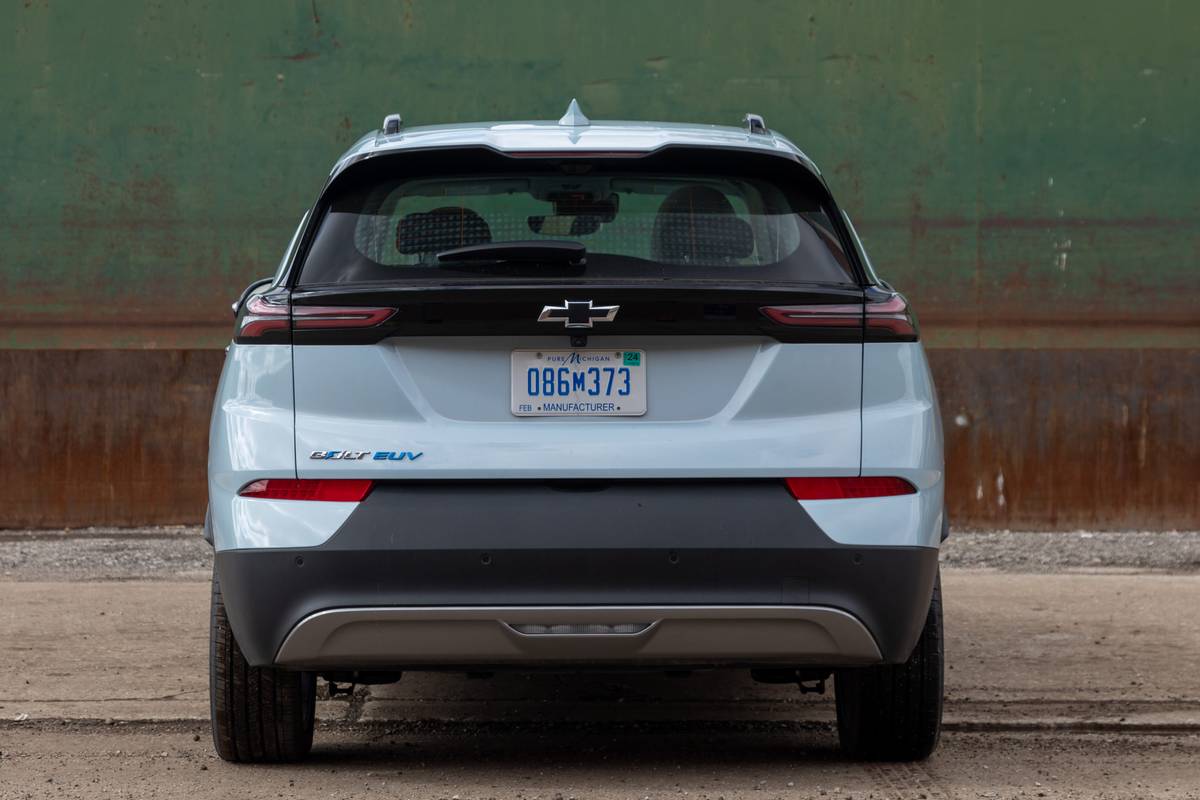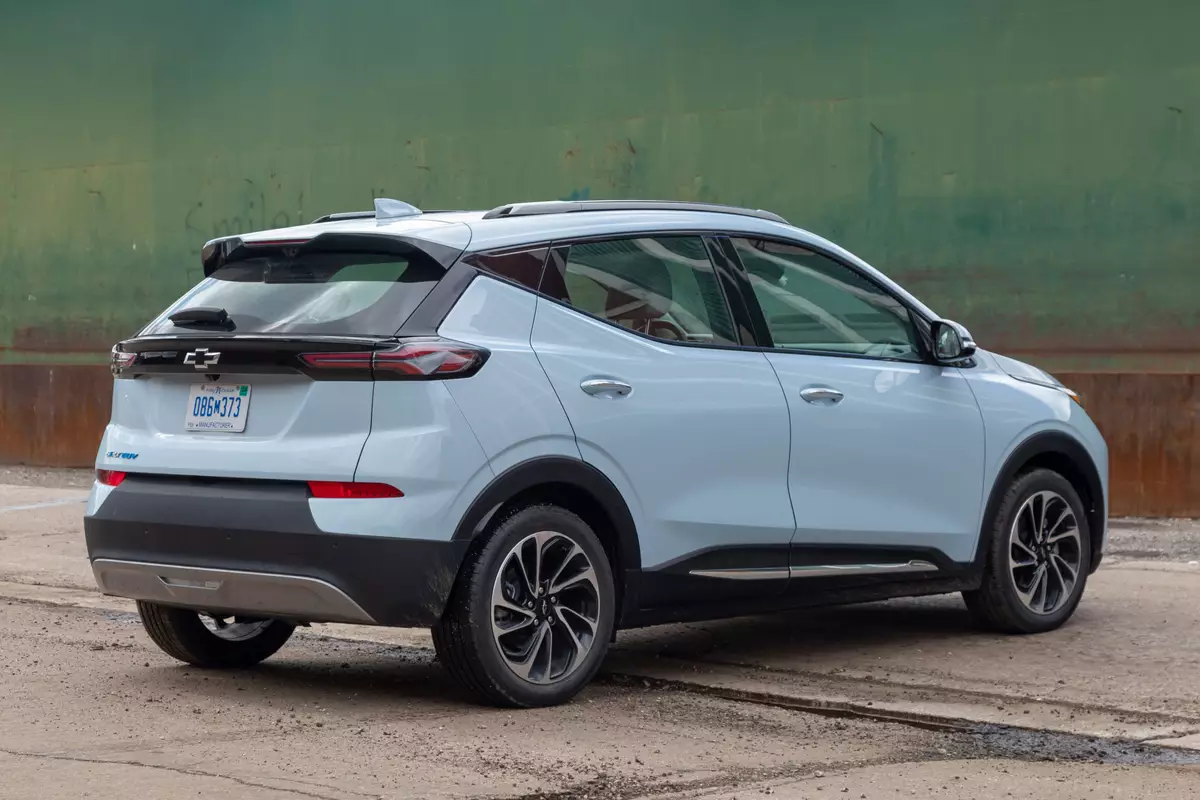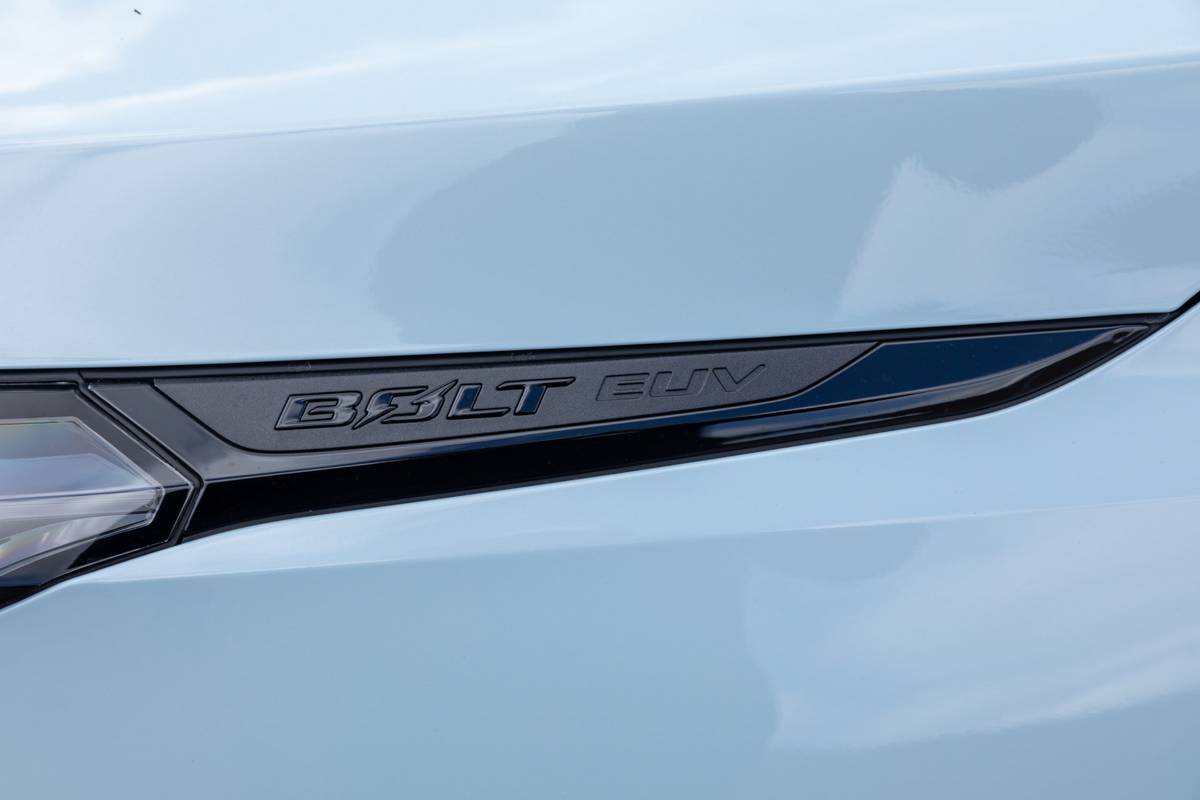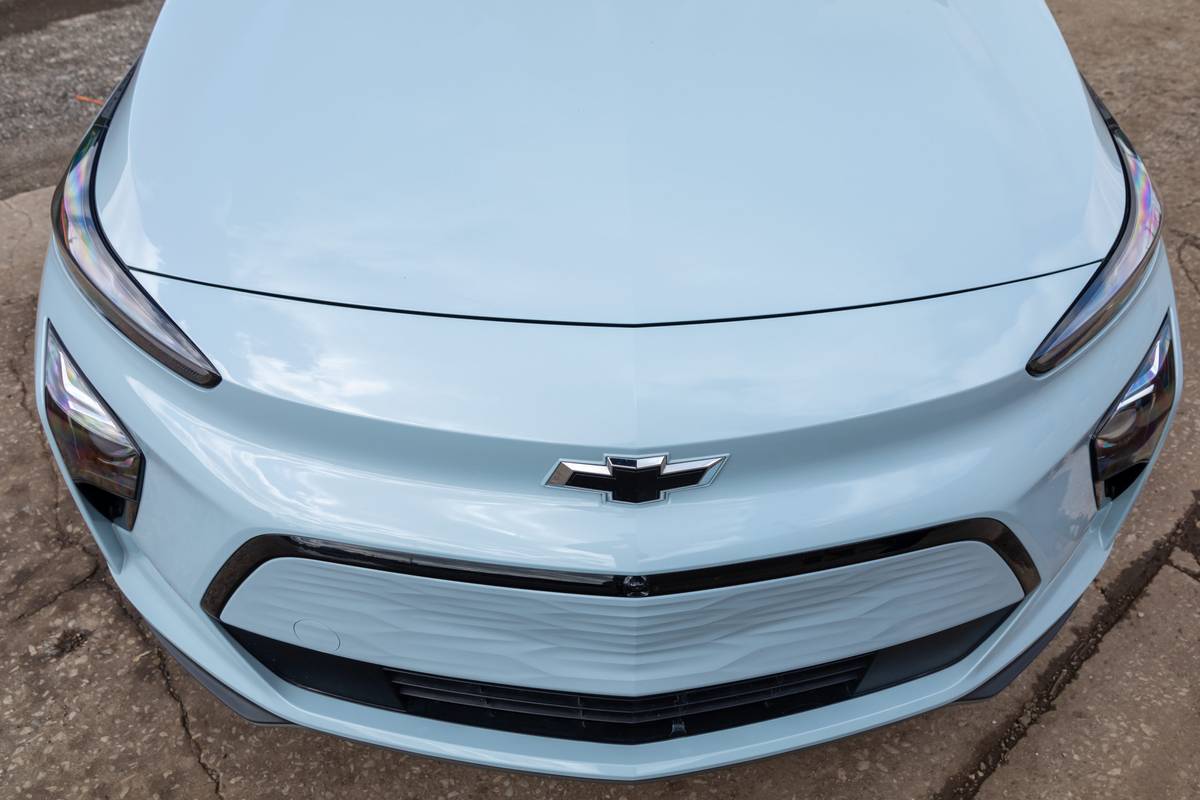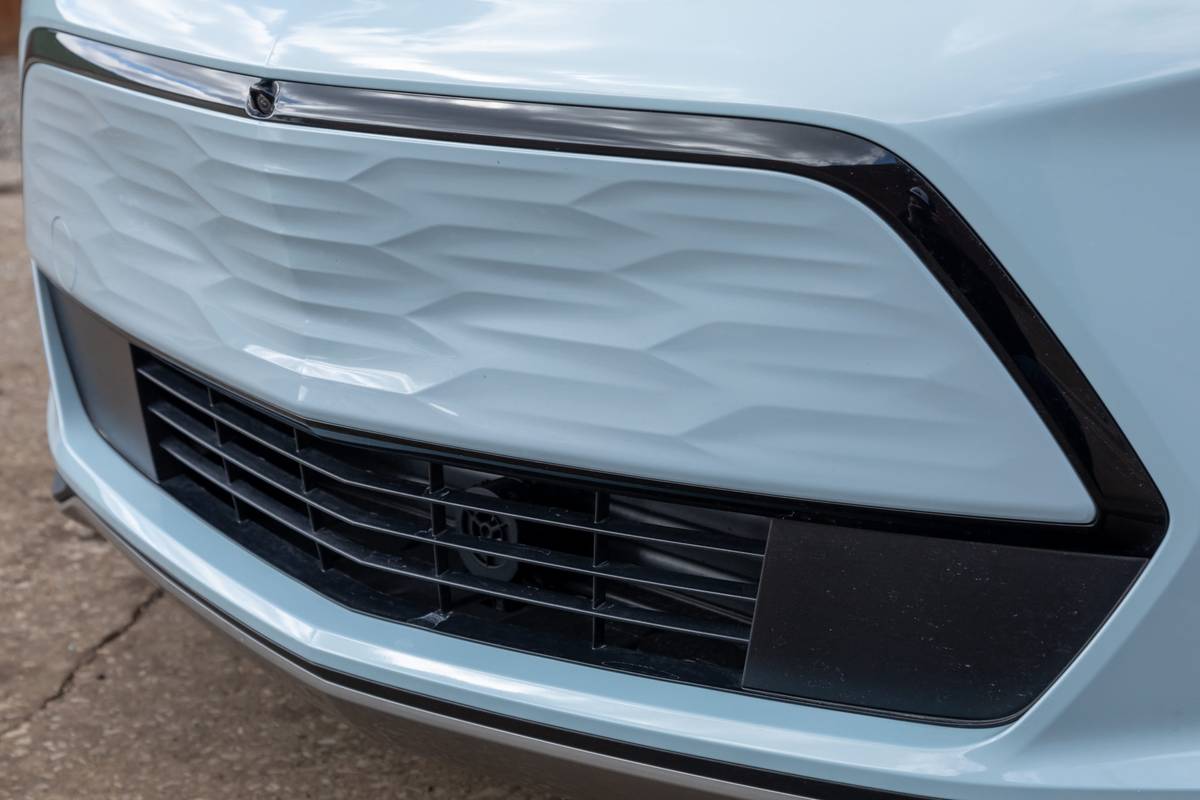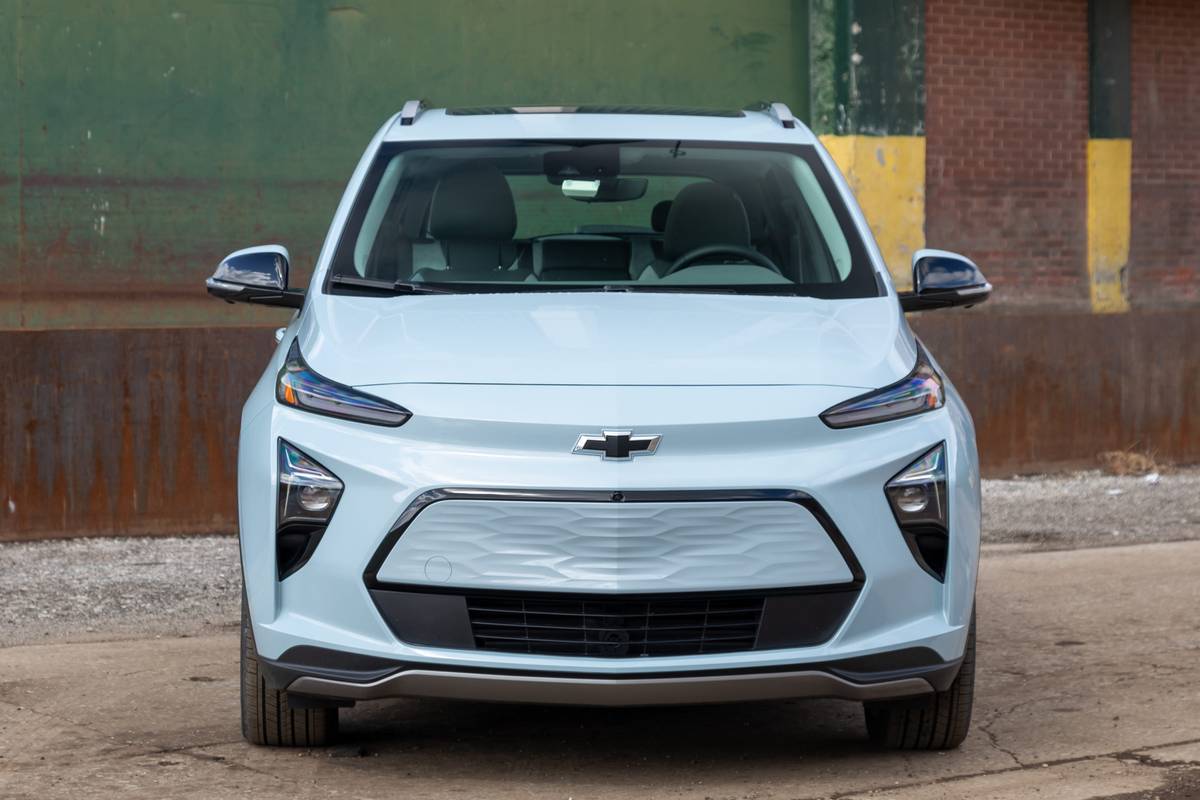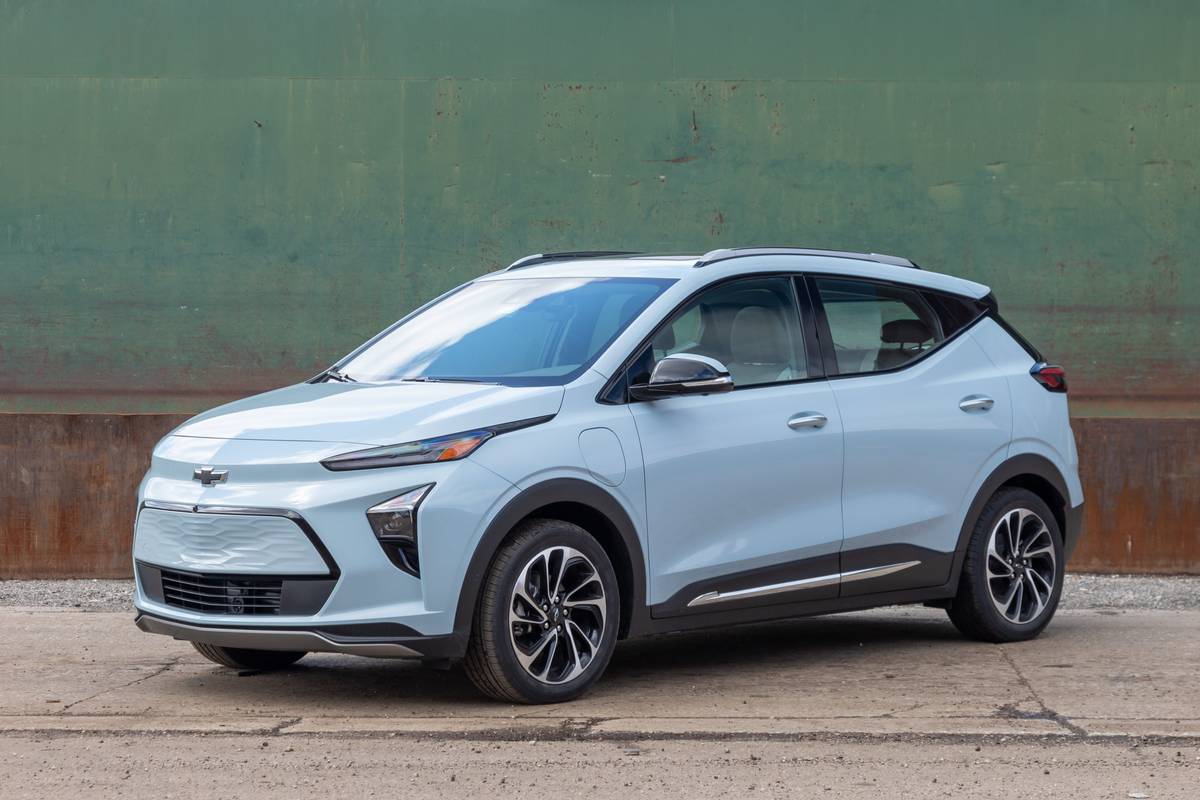
The verdict: The 2022 Chevrolet Bolt EUV is a pleasant and capable commuter vehicle that represents the best of first-generation EVs, as well as some of their limitations.
Versus the competition: The Bolt EUV is a practical hatchback with a traditional interior that lacks the unnecessarily futuristic touches many of its competitors embrace. It’s also not as advanced as many current-wave EVs when it comes to DC charging capabilities.
As automakers replace traditional sedans, hatchbacks and wagons with SUVs, even electric vehicles aren’t immune from the trend. Chevrolet’s popular Bolt EV hatchback soldiers on into the 2022 model year, and joining the party this year is the Bolt EUV. It’s an SUV-ified take on the Bolt that’s somewhat longer and taller than its sibling, but powered by the same 65-kilowatt-hour lithium-ion battery pack.
Both the Bolt EUV and Bolt EV have checkered histories. Only recently did a recall and stop-sale order for both end issued because they, well, occasionally and seemingly spontaneously burst into flames — something broadly considered an undesirable thing for a vehicle to do. GM has issued fixes for both vehicles and resumed selling them, and as of this writing, no further issues have knowingly arisen.
Related: What to Know Before Purchasing an Electric Vehicle: A Buying Guide
Both the Bolt EV and EUV were named our Commuter EV Top Picks, and it’s in that sort of environment — short, city-centric jaunts — that the Bolt EUV shines. In other areas, however, buyers may find it lacking, reliant as it is on older EV technologies.
Driving the Bolt EUV: Great if It’s Not Your Only Car
Running around a city like Chicago in the Bolt EUV highlights the value — and pleasure — of a small, utilitarian EV. Despite being bigger than its Bolt EV sibling, the Bolt EUV is still a small vehicle. It fits nicely into most parking spaces and gaps in traffic, and the instant torque of its electric motor makes it properly quick in city driving. Chevrolet rates the electric motor at only 200 horsepower and 266 pounds-feet of torque, but you’ll win more stoplight-to-stoplight races than you might think. Whether it’s a short trip to the grocery store or a traffic-heavy commute to and from work, the Bolt EUV excels. Even with its older tech, it’s impressively efficient, using 29 kWh per 100 miles of driving, according to the EPA.
Additionally, the Bolt EUV has one of the best one-pedal driving setups I’ve found in an EV. While the brakes feel a bit numb and hard to modulate with the actual brake pedal, in one-pedal mode, they feel nearly as intuitive as a Tesla’s. In a Tesla, however, one-pedal driving is controlled via a menu in the touchscreen; the Bolt’s feature can be easily turned on or off with the push of a physical button below the gear selector. If you want extra on-demand regenerative braking, there’s a paddle on the steering wheel you can engage.
The Bolt EUV isn’t the most comfortable-riding EV. Ride quality isn’t helped by its short wheelbase, but 17-inch wheels do help it handle road imperfections without exacerbating impact harshness. Its hefty battery pack and resulting low center of gravity give it sportier handling characteristics, but its tires lack the grip to take full advantage of the setup. The Bolt EUV’s steering feels communicative compared with some EVs, which often have vague, detached-feeling steering, but it’s not meant to be as precise as a performance car.
However, if you’re trying to make a Bolt EUV your primary vehicle — with the potential for longer highway trips — you’re likely to be disappointed. It loses steam as you get up to highway speeds, and its passing efforts aren’t the most enthusiastic. It’s not the best benchmark, but a 141-mile trip on a chilly and windy day, mostly on highways, used roughly 170 of the 207 miles of range the Bolt EUV displayed when the trip began.
One potentially nice thing about highway trips in the Bolt EUV is its available Super Cruise semi-autonomous hands-free driving system. It’s not a more advanced version that can switch lanes for you, but this Super Cruise does let you take your hands off the wheel for long stretches of driving (assuming you’re on a section of road the system has mapped). Personally, I don’t enjoy ceding that much control to a car no matter how many safeguards are in place, but some shoppers may find it an appealing feature.
‘Normal’ Interior
One of the most remarkable things about the Bolt EUV’s interior is how unremarkable it is. The gear selector is a little strange-looking, but otherwise there are few immediate clues that you’ve gotten into an EV. Most EVs really lean into the segment’s futuristic nature or the fact that an EV’s architecture can allow for a less traditional interior layout. In the Bolt EUV, though, you get an interior that would feel at home in a Trax subcompact SUV.
Two highlights are the digital displays for the instrument panel and touchscreen. For the instrument panel, you get a configurable layout that can include a variety of information; I preferred a configuration that included a graph with predicted range, as well as hypothetical maximum and minimum ranges (best- and worst-case scenarios). The 10.2-inch touchscreen is also easy to use and looks quite large for a vehicle this size. It offers standard wireless Apple CarPlay and Android Auto, with clear, crisp graphics and EV-specific information related to charging and efficiency. Also impressive is its sheer number of physical controls: Chevrolet opted for traditional and functional here, a contrast to some competitors’ overreliance on things like touch-sensitive panels and touchscreen-based controls.
Apart from the displays, the Bolt EUV’s materials quality felt comparable to vehicles priced around $30,000 — frustrating given the one I drove had a sticker price of $43,190 (including destination fee). The interior was even creaky, which would’ve been more reasonable (though still unwelcome) in a much older car. That may not apply to every Bolt EUV, though; give the interior panels a push when testing one you might buy.
One area where the Bolt EUV outshines the Bolt EV is in backseat comfort, where its added length translates to additional backseat legroom. For such a small vehicle, the backseat is actually a comfortable place to be even on longer trips. Two complaints, however: The window design makes the backseat feel more enclosed, and the head restraints hamper rear visibility even when folded down.
Chevrolet says the Bolt EUV has slightly less cargo space behind the backseat than its hatchback sibling, but it’s big enough back there to hold multiple pieces of luggage or a large grocery run. In our testing, we measured the cargo area at 13.3 cubic feet, roughly in line with many subcompact and even some compact SUVs.
Charging the Bolt EUV
Like its driving experience, the charging experience of the Bolt EUV is mostly positive, with some good and some less good. Let’s start with the good: Both the Bolt EV and Bolt EUV come with standard DC fast charging, and both come with a charging cord that can be used for either Level 1 or Level 2 charging. That means that if you have a 240-volt outlet available, you can charge your Bolt EUV at Level 2 without additional hardware. If you don’t have Level 2 charging at home, Chevrolet will help cover the cost of installing it — up to $1,000 toward the outlet and circuit installation and up to $250 toward permit fees.
On 120-volt Level 1 charging, Chevrolet says the Bolt EUV can add 4 miles of range for every hour of charging at 12 amps (not the lower 8-amp setting the car defaults to for use on shared circuits). That likely won’t be useful for owners driving more than a few miles every day, which is why we recommend EV owners have Level 2 charging at home. Using a 240-volt outlet and the included charging cord (operating at 32 amps at this voltage), Chevy says the Bolt EUV adds 25 miles of range per hour.
For 2022, Chevrolet bumped up the Bolt EUV’s onboard charger — a component that can be a bottleneck — from 7.2 to 11.5 kilowatts. This means the car can now charge at a rate even faster than you can achieve with that included 32-amp cord, maxing out with a 48-amp Level 2 home charger. This setup requires a 60-amp circuit and hardwired installation, but it can add 37 miles of range every hour, Chevy says. One of our editors charged with a 48-amp Level 2 charger and saw only about 30 miles of range added per hour, but that was in cooler temperatures and included the period when the battery neared a full charge when charging slows down.
The bad news is that the Bolt EUV’s DC fast-charging capabilities can lag its competitors. Your charging rate will depend on the charging station, temperature, battery temperature and more, but the Bolt EUV’s DC charging is limited to 55 kW — far below newer EVs. Chevrolet says DC fast-charging can add up to 95 miles of range to the Bolt EUV in 30 minutes, while other EVs have best-case capability of charging from 10% to 80% in that amount of time or less. My experience on a DC fast charger took the Bolt EUV from a 25% charge to 82% in just under an hour.
On the aforementioned road trip, I tried to rely on Level 1 charging to give me enough range to get home. That was a mistake amplified by another mistake I made in not switching the 120-volt charging from the default 8-amp Reduced setting to the 12-amp Maximum setting. When I plugged in on a Saturday afternoon, the instrument panel said the car would be fully charged by Tuesday afternoon. That won’t cut it. (This is one reason we recommend owners get Level 2 home charging.)
My backup plan was to add enough range to make it to a public Level 2 charger just off my route home, wait there long enough to add enough range to get me to a DC fast charger, then go home. What would’ve been a 2.5-hour trip turned into a seven-hour adventure. I even got passed by a Prius on a two-lane highway while babying the Bolt EUV’s range so I could make it to the first charger. A faster-charging EV could’ve shaved at least some of that time, and adequate home charging would’ve made “filling up” along the way unnecessary.
More From Cars.com:
- 2022 Chevrolet Bolt EUV First Drive Review: Larger, Better, Faster, Stronger
- 2022 Chevrolet Bolt EV and Bolt EUV: Bow-Tie EVs, Now In Two Sizes
- Top 10 Most Efficient Electric Cars
- What Is One-Pedal Driving?
- Here Are the 11 Cheapest Electric Vehicles You Can Buy
Is the Bolt EUV Worth It?
With a starting price just over $34,000 — and a loaded model like the Bolt EUV Premier we tested cresting $43,000 — the Bolt EUV is one of the more affordable EVs available. Still, those prices aren’t exactly cheap, even before factoring in any potential “market adjustments.” And in bad news for customers, the Bolt EUV — like all GM EVs — is no longer eligible for any federal EV tax credit. While that credit isn’t an instant $7,500 discount on eligible EVs, it does make them more affordable in the long term.
Another factor to consider is that Chevrolet is moving on from the Bolt family of EVs to its new Ultium platform, which made its Chevy debut in the 2024 Silverado EV pickup truck. The platform will also underpin the Equinox and Blazer EVs, likely spelling the end of the Bolts, which could potentially lower acquisition prices and negatively affect their resale value and repairability. Lingering concerns about the fire issue might have a similar impact.
So, is the Bolt EUV worth it? It’s not a great choice for a primary car, but the cost of entry is relatively low and it’s an easy-to-understand EV that will cover your basic needs. Also, Chevy’s help with the cost of Level 2 home-charging installation seems like a more helpful incentive than other automakers’ free charging offers. It’s certainly worth consideration as a second, commuter-focused vehicle. If you’re looking to make an EV your primary car, however, a more modern one may be a better choice.
Cars.com’s Editorial department is your source for automotive news and reviews. In line with Cars.com’s long-standing ethics policy, editors and reviewers don’t accept gifts or free trips from automakers. The Editorial department is independent of Cars.com’s advertising, sales and sponsored content departments.






























